Review of the Addlink A95 PCIe Gen 4 NVMe SSD
To say that there have been a lot of SSD brands fighting for association with PS5 as a desirable upgrade for this console system would be quite an understatement. Although there are numerous supported SSDs that have been available on the market (some longer than the PS5 system itself) and the feature to increase storage has only recently been enabled on the console, there is actually NO official SSDs from Sony for the PS5. Moreover, with no official compatibility list published and the tech specs of modern SSDs being a great deal more sophisticated than storage that came before it, many buyers are unsure about choosing the right SSD for their PS5. So, this has led to many SSD brands targeting their media, their focus and even their retail packaging to highlight PS5 suitability. Which leads us very neatly to the Addlink A95, an SSD that is precisely targetted at PS5 owners, sporting the official PS5 logo and specifications that put it on par with most of the SSD big guns in PS5 upgrades (i.e the Seagate Firecuda 530, WD Black and more), they are clearly not messing around on this new release. Also arriving with their own in-house compact heatsink, there sure is a lot of like here, so today we want to review the Addlink S95 SSD, get some benchmarks up and see how it compares with its biggest rivals. Let’s go!
Addlink A95 SSD Review – Quick Conclusion
Few SSDs that I have featured here on NASCompares have left me with the consistently please tone that the Addlink A Game A95 SSD has. Whether you are looking at this as an SSD upgrade for your PS5 or your Gaming PC, there is very little to be unhappy about here as a gamer. The Build quality of both the SSD itself, as well as the heatsink and choices made at the hardware architecture level are all high-end choices that do not leave you with a feeling unsatisfied. When choosing to upgrade your SSD, it can be easy to always opt for the much bigger know brands like WD or Seagate, thinking that there is a clear reason for their higher price. As true as that can be sometimes, in the case of the Addlin kA95 you have an SSD that takes advantage of the same hardware choices that those bigger brands office, includes a high-quality heatsink, arrives preattached in a very sturdy build and at no point in the testing did we feel that a power or memory bottleneck appears. It might lack some of the enterprise bells and whistles of more enterprise-level SSDs, but the A95 is not targeting flash, fabric or caching – it is designed for gamers and at this, it is an unquestionable success. Keep an eye on this one!
Addlink A95 SSD Review – Packaging
Shiny. Very, VERY Shiny! That is how I would begin in describing the packaging here. Arriving in somewhat holographic packaging, the retail box of the Addlink S95 pulls no punches here when it comes to aiming at the gamers, with most of the focus going to performance stats and highlighting their A Game gamer series (the A95, A90 and A92).
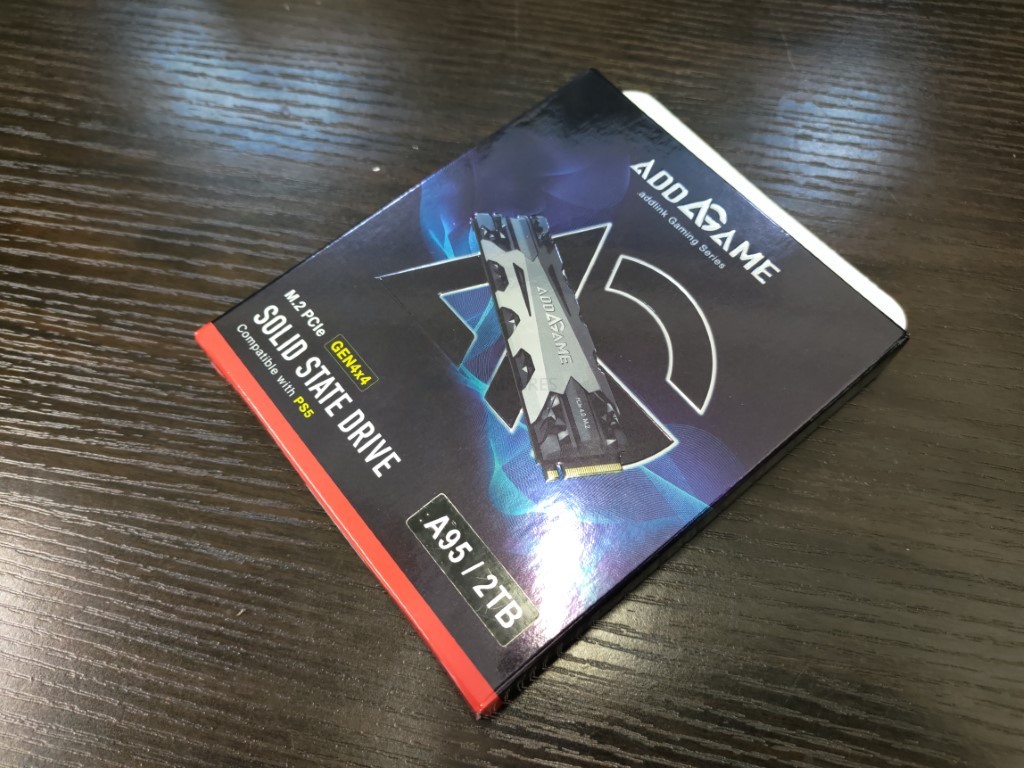
The rear of the box makes a point of not only highlighting that this SSD is PS5 compatible, but also it’s one of the first SSDs I have had in for review that actually features the official PS5 logo. Along with that, there is a little nod to the heatsink and rather unique (at least as far as other M.2 SSDs on the market) application of the heatsink, using a much more malleable substance (we will go into more detail later) they are keen to highlight that this does an improved job of maintaining the SSD temperature. This will be covered at the last 3rd of this review in the testing and benchmarking.
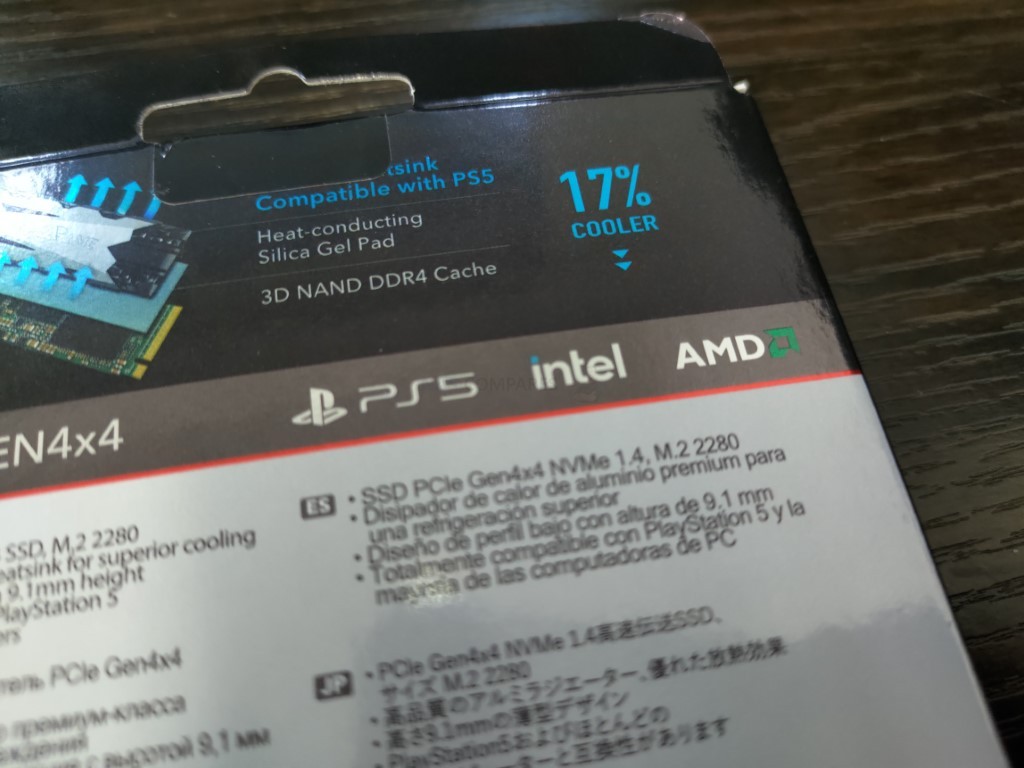
The contents of the box are a little small, but not in a bad way. A first-time setup guide and warranty information is included in a booklet (as well as the usual web/3D-Barcode links), as well as the SSD itself (with heating pre-applied).
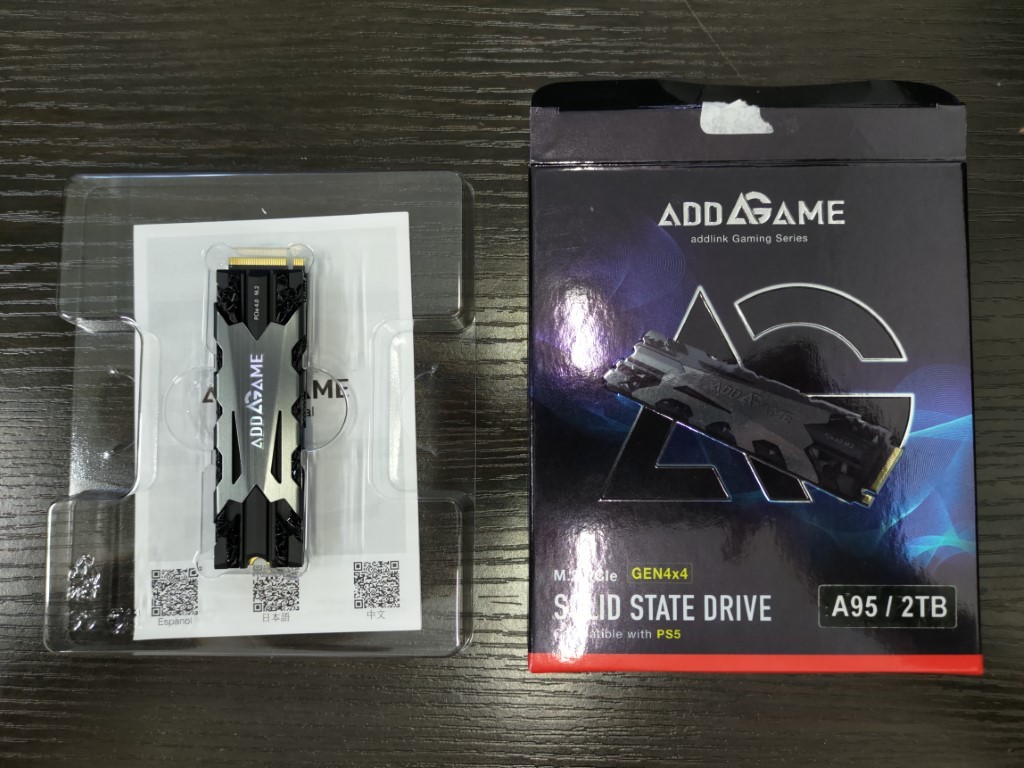
The Heatsink on the Addlink A95 is an interesting mix of elements that include aesthetical design, air efficiency and professional application. Addlink have an impressive range of m.2 NVMe solutions in their catalogue, many using modified versions of this heatsink (depending on the product series), so the need to add the Add AGame logo and PCIe4.0 architecture makes sense.
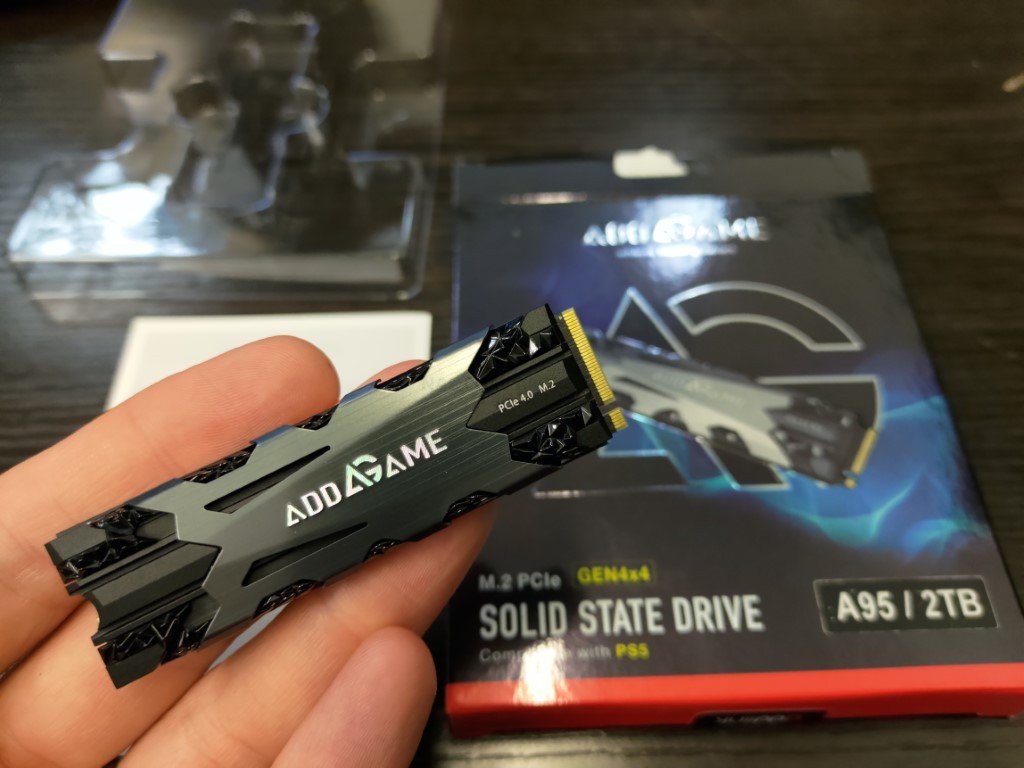
Looking at the A95 heatsink directly, it is a sweet looking design. Comprised of 3 main elements, a pre-cute metal plate with air channel grooves, a secondary metal clip that surrounds it and finally the thermal silica gel pad that connected the Heatsink to the SSD.

Looking at the Addlink A95 at an angle shows that, despite the aggressive nature of the heatsink, it is actually not very tall. In fact, the Low-Profile designed heatsink is only has a 9.1 mm height, with the total Heatsink+silica+SSD coming to just under 11.25mm. With space being at a premium in the PS5 M.2 SSD slot (and users wanting a little space around/above their SSD+HS to promote any airflow, this is particularly impressive.
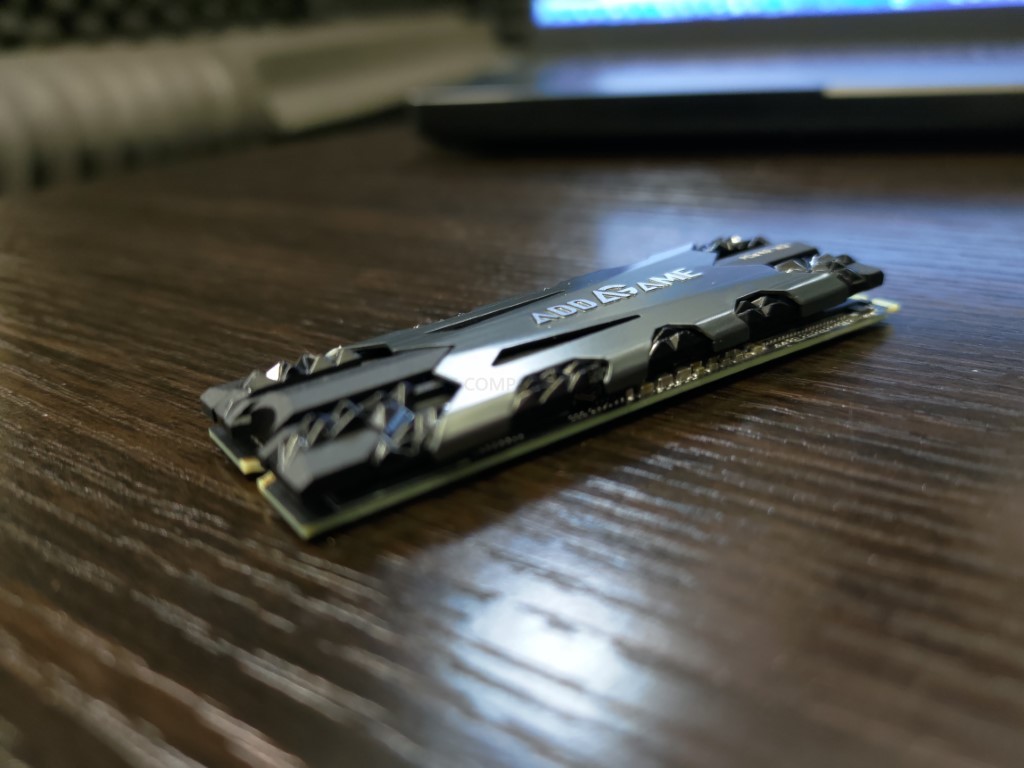
Likewise, the heatsink is fractionally raised from the SSD a degree higher than most SSD+HS combos on the Adddlink A95, as the silica gel between them is particularly thick and envelopes the chips underneath a tad (on purpose). This means that is a surrounding around that can capture passing airflow around the SSD, that is not obstructed by a surrounding casing.
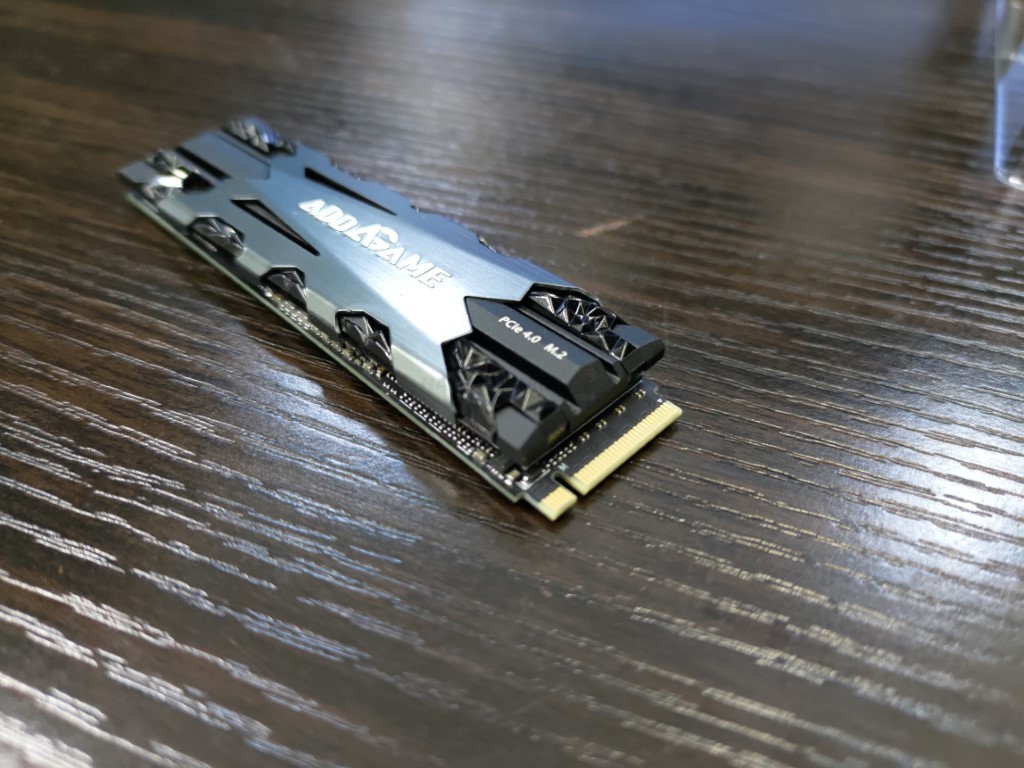
Removing the Addlink A95 Heatsink was NOT easy. I cannot stress enough how well attached this heatsink was! I nearly snapped the SSD in two trying to remove it. The SSD uses a adhesive coated silica gel that covered the entirety of the M.2 NVMe SSD, but also slightly envelopes each chip on the drive. It doesn’t smother them (so no touching the PCB) but it does surround the edges of each component to cover a greater physical density, whilst still remaining tidy.
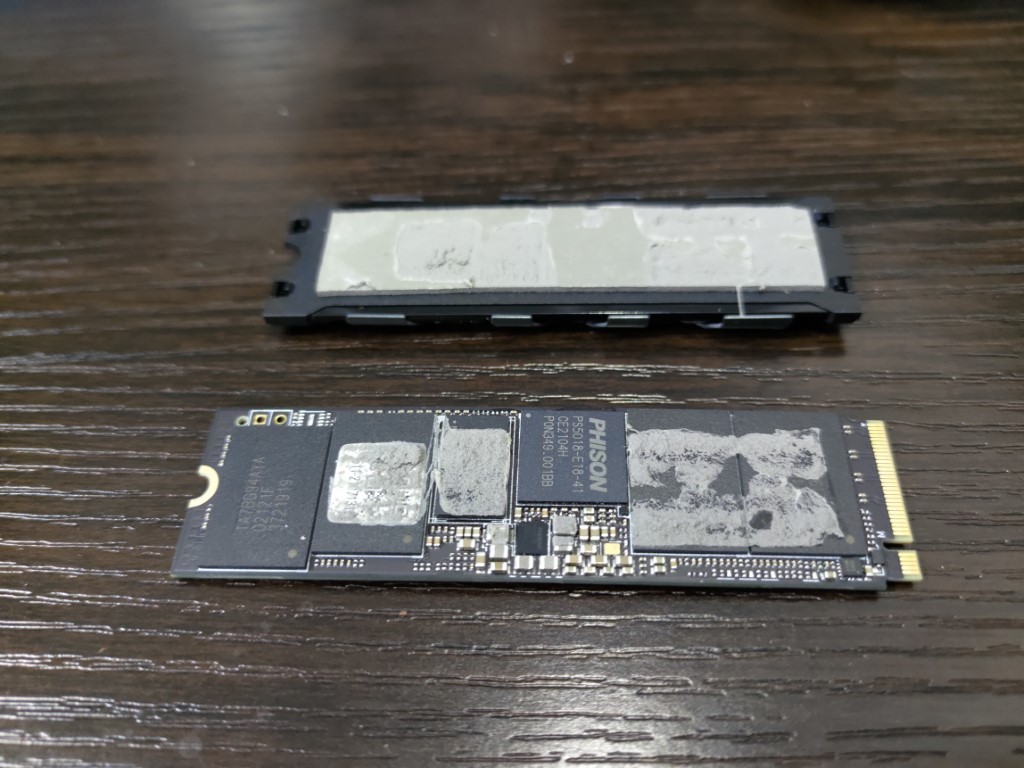
A closer look a the heatsink base shows you just how well it surrounds each chip (with clear indications of where each was placed from imprints). Additionally, you can see that the consistency of the silica gel pad is not the same as the reusable pads in other heatsinks, with this substance having more in common with thermal paste found on CPUs. The slightly porous nature of it definitely seemed to ensure that the components were adequately covered and it does leave you with a distinct feeling of quality and professional application.
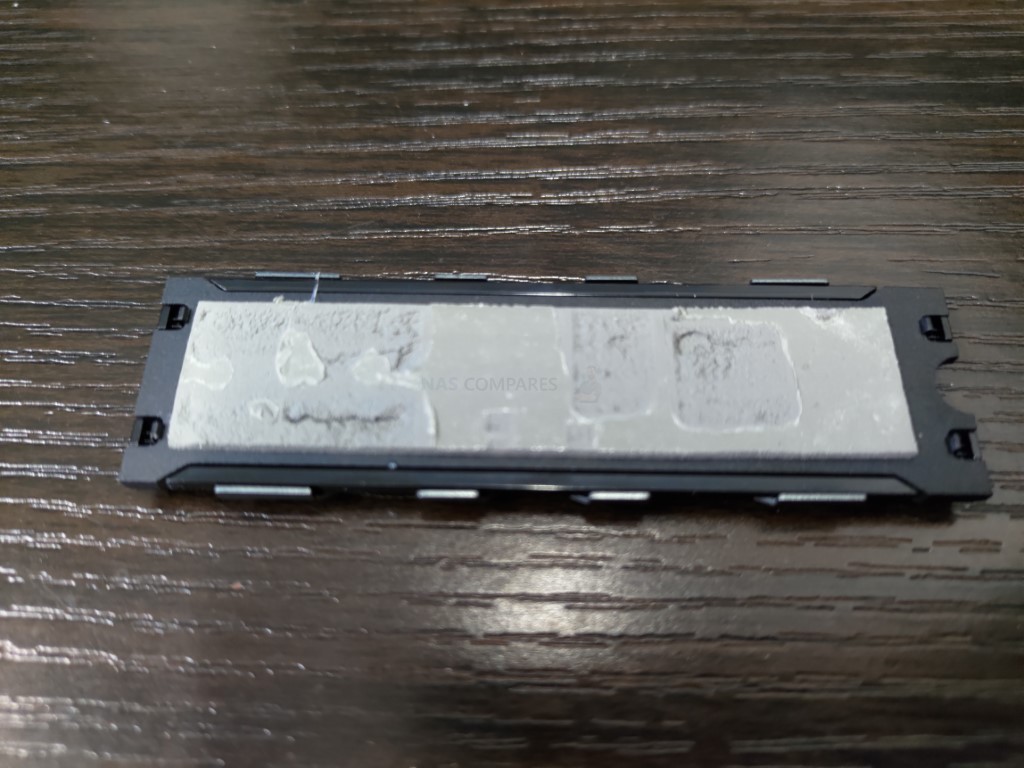
Taking the time to clean a little of the silica gel away, you can see that the A95’s controller is much lower on the board than many other SSDs (where it will more often be located directly beneath the m.2 key connector.
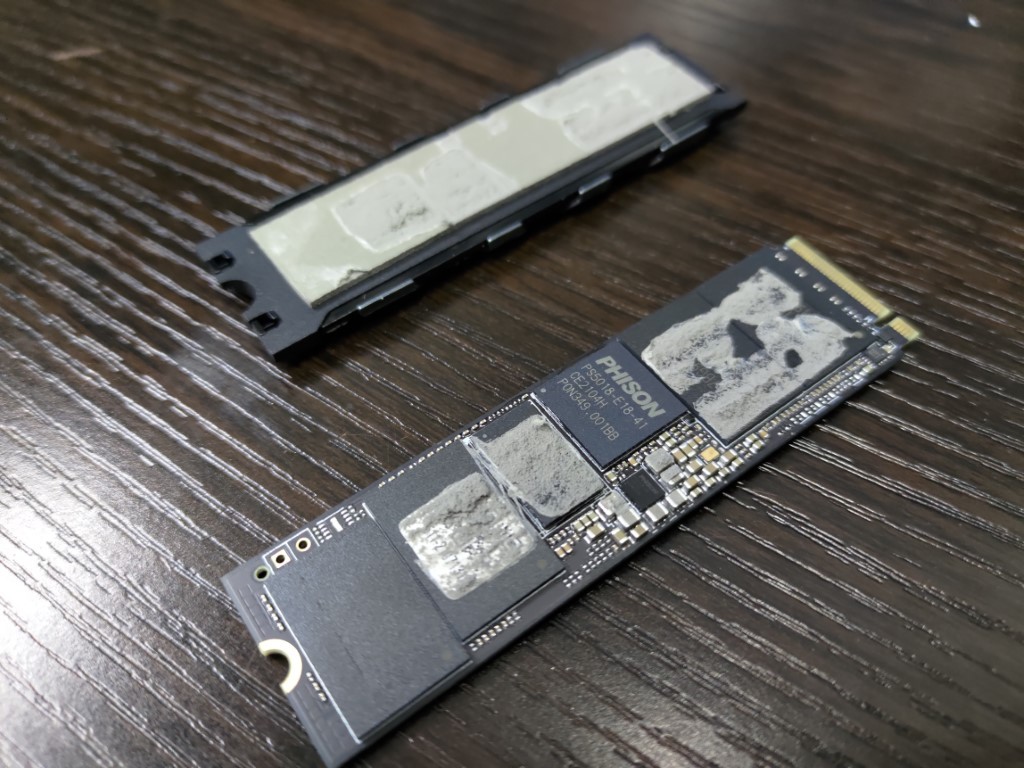
As mentioned, the Addlink A95 NVMe SSD fits very neatly into the PS5 SSD upgrade slot, with a clear few millimetres between the heatsink and the m.2 slot cover. Although it is worth highlighting that this heatsink was originally designed for a gaming desktop PC installation (like 99% of other M.2 SD heatsinks), so I will hold full judgement on how efficient the A95 heatsink is for PS5 heat dissipation for another article/video soon.
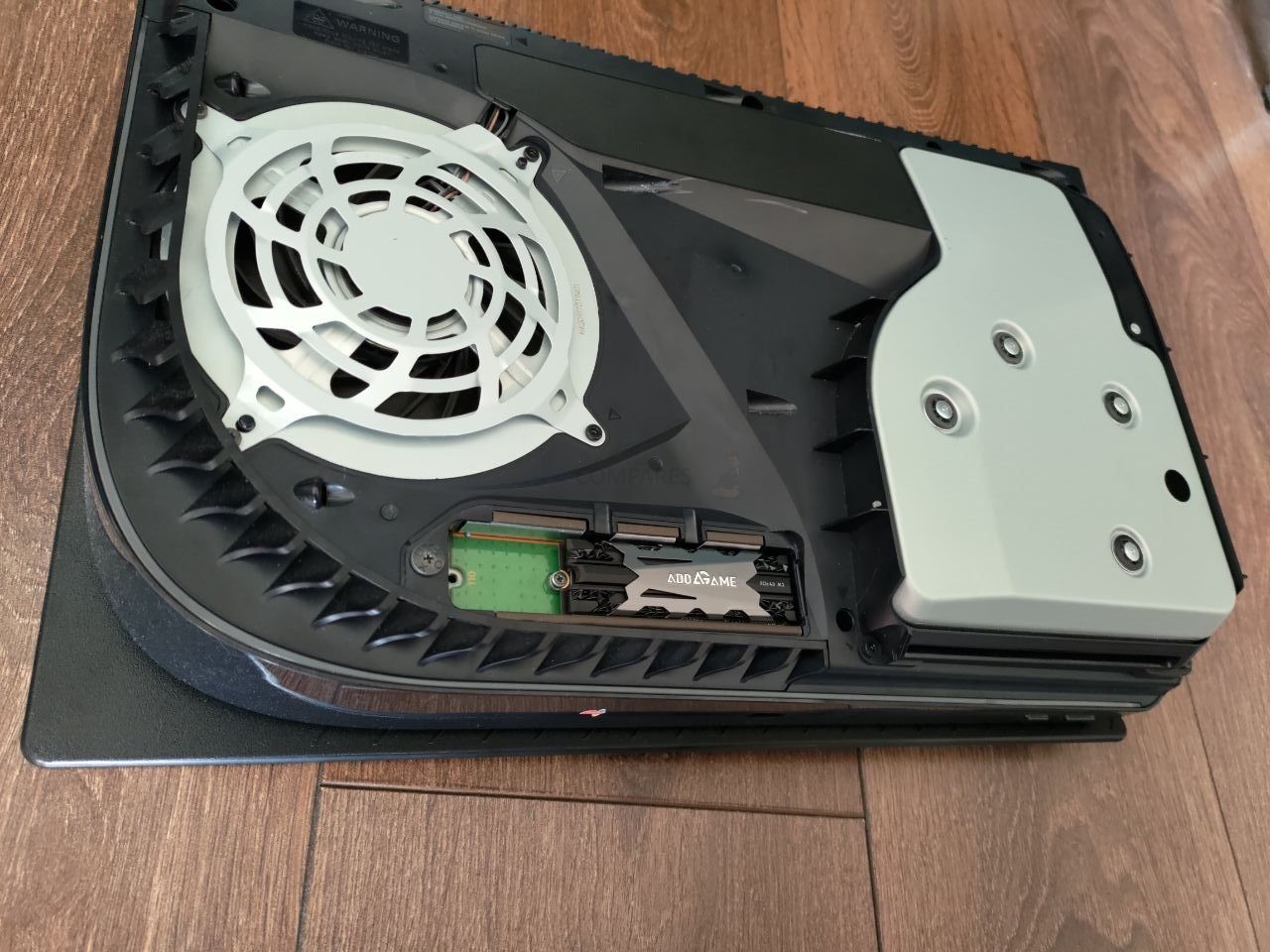
So that is the physical design of the Addlink A95 SSD. But what about the hardware components themselves? Does the Addlink A95 cut the mustard in terms of current generation hardware and protocols? Let’s find out.
Addlink A95 SSD Review – PS5 Benchmark
Upon installing the Addlink A95 SSD into the PS5, the system gave an impressive benchmark of 6,556.98MB/s. It should be noted that the PS5 has a very unique benchmarking system internally for its own software needs and although Sony recommends that you only use SSDs with a reported 5,500MB/s+ performance (sequential Read) minimum, we have seen SSDs with a lower reported PC benchmark of this be rated at 5,500MB/s+ om the PS5 benchmark. So, there is definitely wiggle room there.
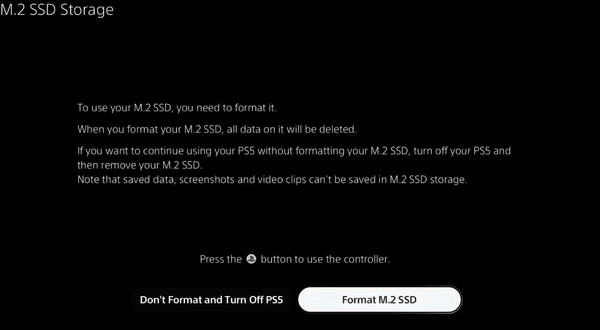
To put the Addlink A95 SSD PS5 Performance Benchmark into a little perspective, here is how it compares against the Adata XPG Gammix S70, Sabrent Rocket 4 Plus and Gigabyte Aorus 7000s – three SSDs that are all PS5 supported:
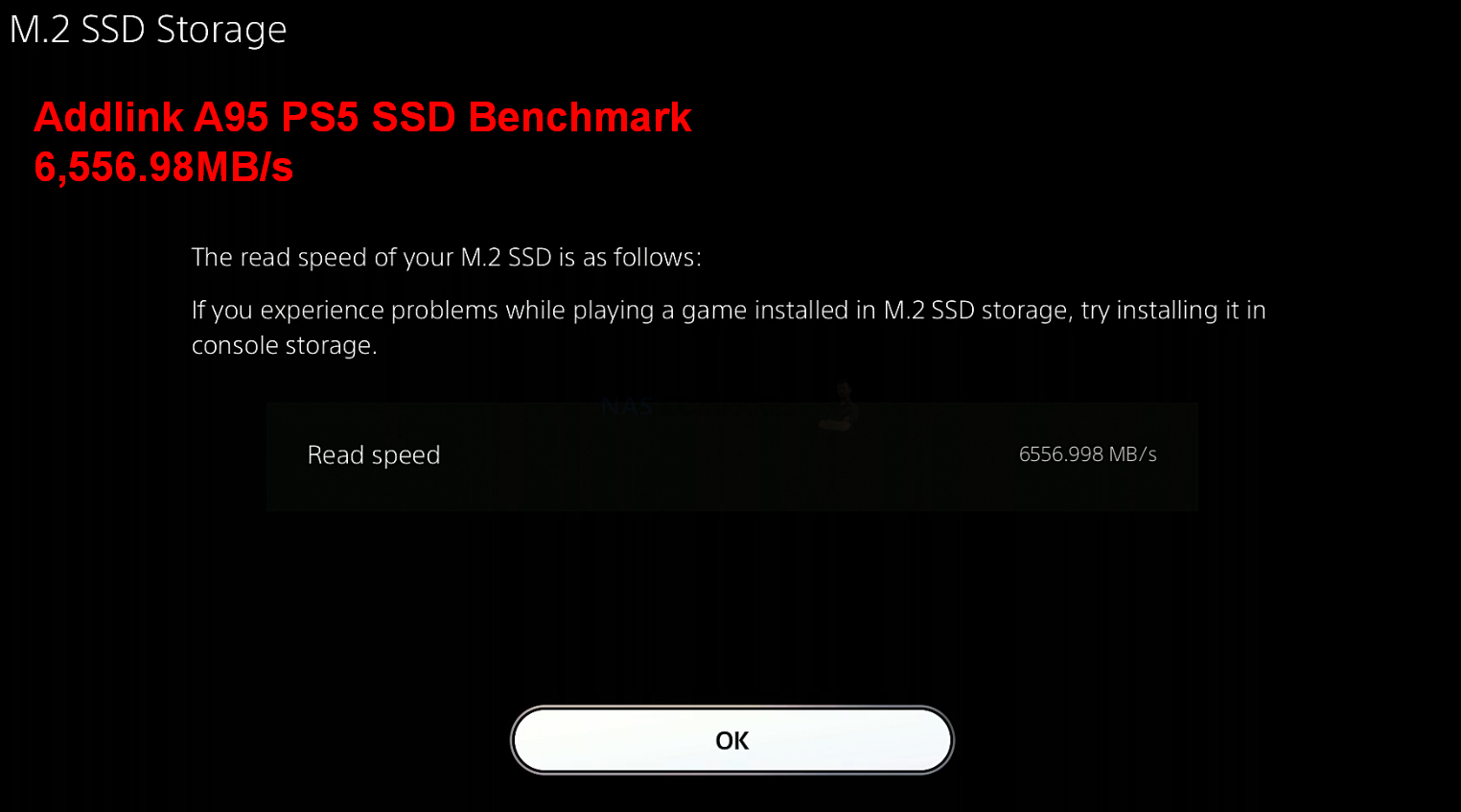 |
 |
| Addlink A95 PS5 Benchmark – 6556MB/s | XPG GAMMIX S70 PS5 Benchmark – 6235MB/s |
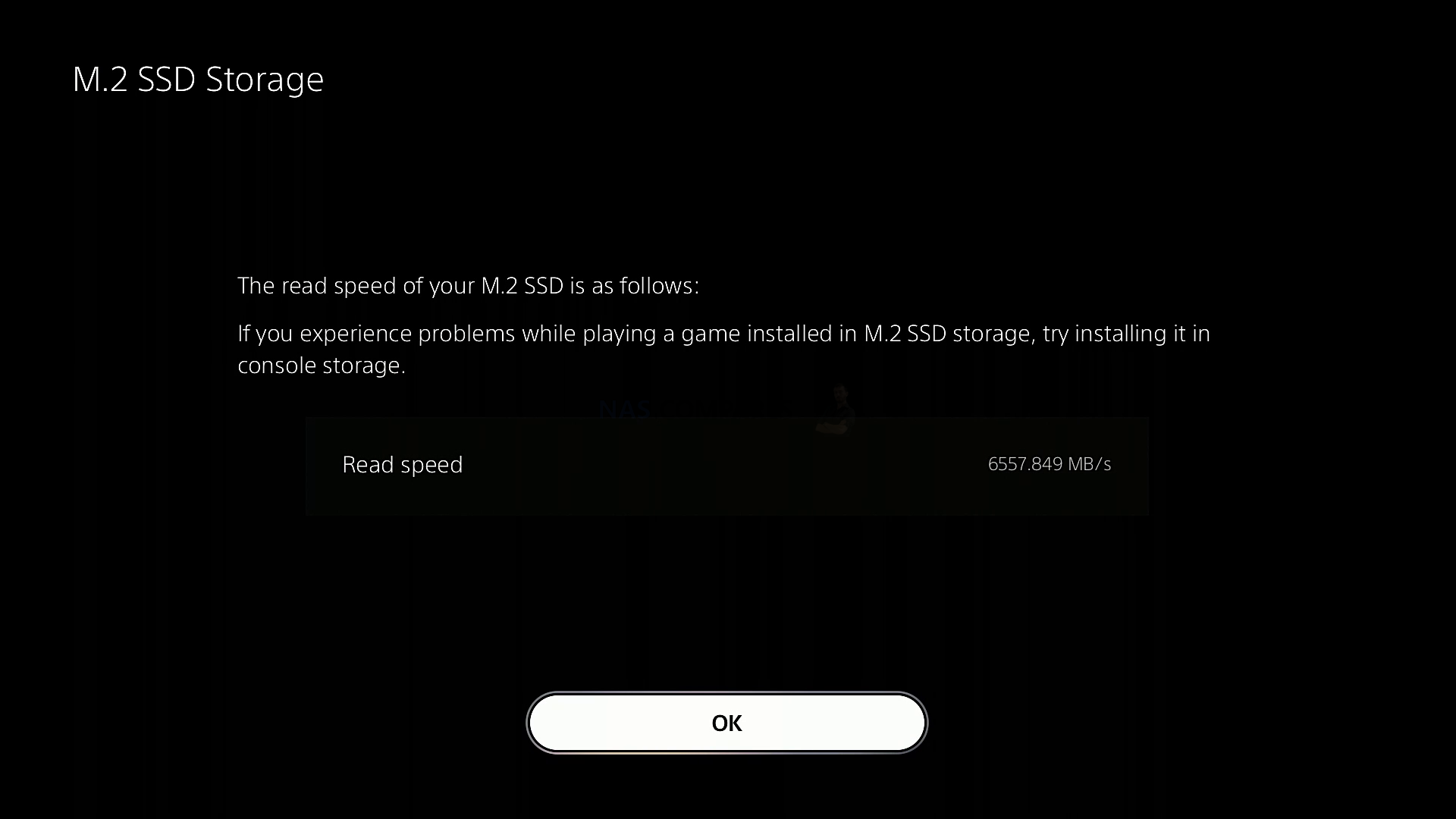 |
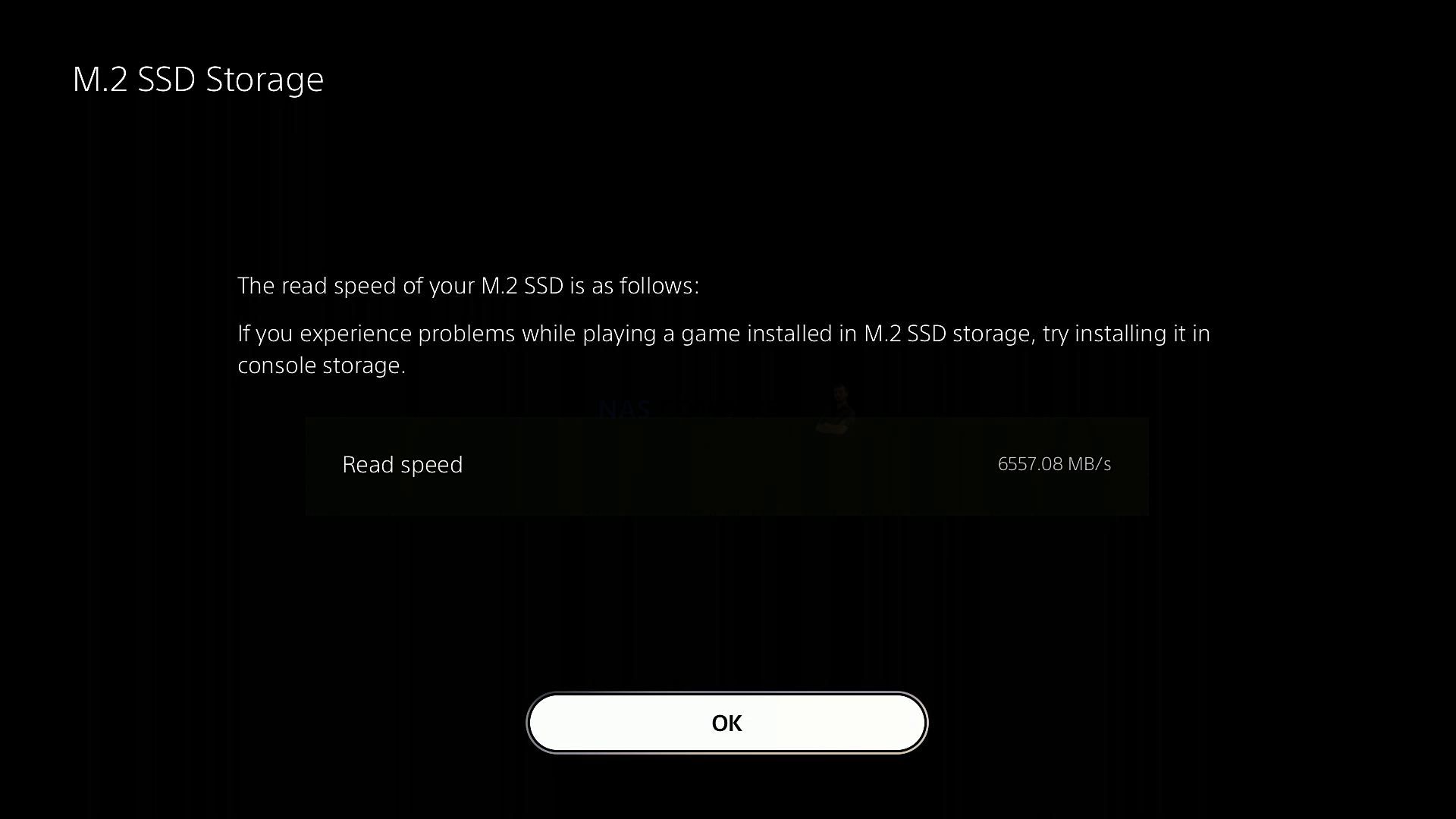 |
| Sabrent Rocket 4 Plus – 6557MB/s | Gigabyte Aorus 7000s PS5 Benchmark – 6557MB/s |
With less than 1MB between the top three and more than 300MB/s higher than the XPG Gammix S70, it is a solid benchmark. Additionally, the Addlink A95 takes care of overprovisioning at the NAND/Controller level (with four 176L 3D TLC NAND modules of 512GB), so that means that this 2TB SSD is genuinely available as 2TB on the Playstation 5 Storage manager (not 1,920GB as seen previously):
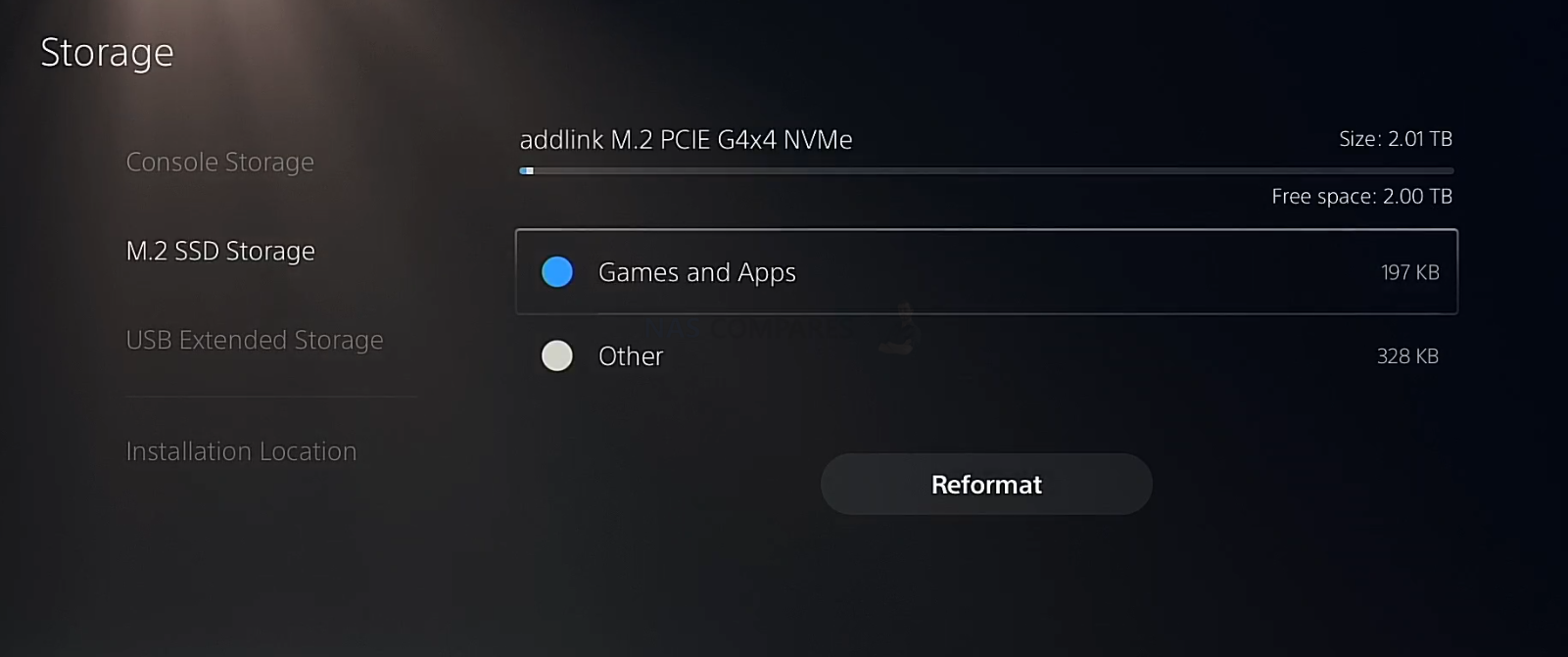
Full PS5 Testing of the Addlink A95 (along with the A90 and A92) will be coming soon here on NASCompares and over on the NASCompares YouTube channel. But for now, let’s carry on with looking at the hardware of the A95, how it conventionally benchmarks and how it compares with currently favourite PS5 SSDs like the WD Black SN850 and Seagate Firecuda 530,
Addlink A95 SSD Review – Hardware Specifications
As you might expect from an M.2 NVMe SSD that boldly promises performance of over 7,000MB/s sequential read (ie BIG data), the hardware specifications and architecture of the Addlink A95 are quite modern. Indeed, for all the big talk of the Seagate Firecuda 530 hardware (still currently the ‘score to beat’ PCIE Gen4 m.2 NVMe right now) being top tier, the Addlink A95 is pretty darn similar on the spec sheet! Below is how it looks:
| Addlink A Series A95 SSD
1TB = $199 / £199 – 2TB = $409 / £399 – 4TB = $799 / £799 |
|
| PCIe Generation | PCIe Gen 4 |
| NVMe Rev | NVMe 1.4 |
| NAND | 3D TLC Micron B47R 176L |
| Max Capacity | 4TB – Double Sided |
| Controller | Phison E18-PS5018 |
| Warranty | 5yr |
I know a lot of the above will seem needlessly technical, so below we can bring the most important considerations into sharper focus.
Hardware Focus of the Addlink A95 SSD Series
The first big, BIG thing to remember here is the controller, that Phison E18. An SSD is much like a microcosm version of a whole computer. The Controller is equivalent to the CPU, and Phison are one of the bigger 3rd party SSD controller manufacturers in the world! I say 3rd party, because some long-running storage brands like Samsung and WD have most of their development and hardware engineering ‘in-house’ and use their own branded controllers. Whereas some brands source some/all components for their SSDs from 3rd parties – which is not necessarily a bad thing for both them and the industry (there are pros and cons on either side). Phison has been at the cutting edge of this subject for years now and the E18 was first revealed last year in 2020, but due to the pandemic making storage trends unpredictable and semi-conductor shortages, most SSDs that utilized the Phison E18 eventually arrived in 2021. This controller is one of the biggest reasons that the Addlink A95 can actually back up it’s promises about the 7,000MB/s+ Sequential Read (sequential data = big chunks of data). However, that is not the only reason.
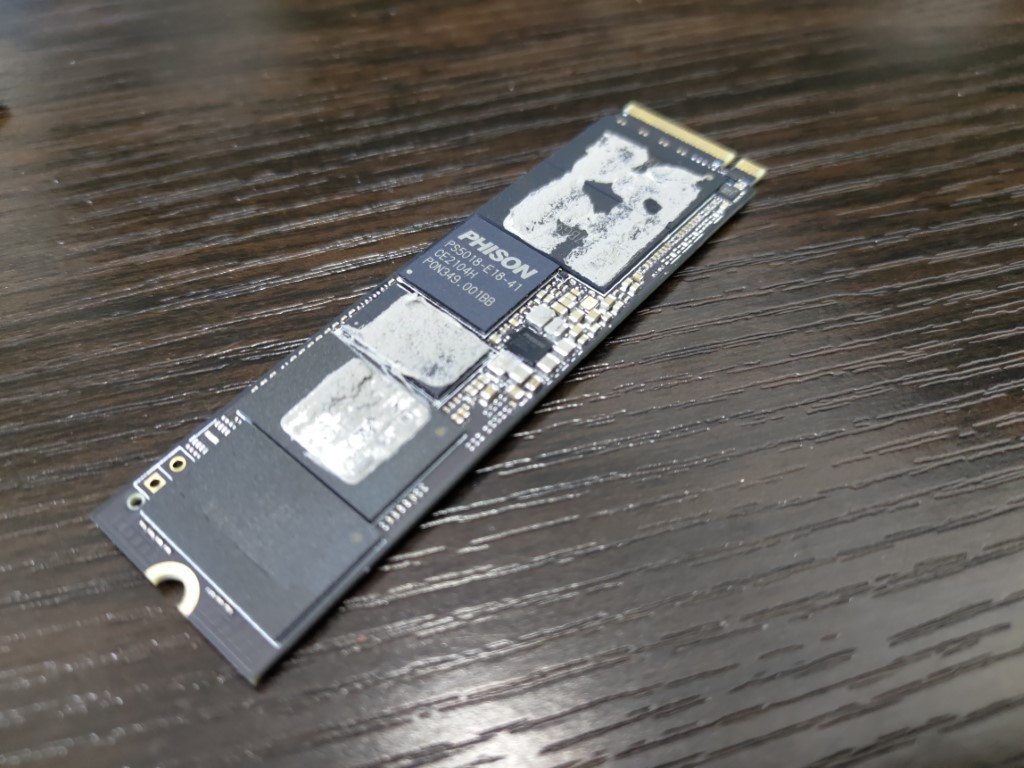
The NAND on the Addlink A95 is where the data lives! SSDs (as you no doubt know) do not use moving parts as found in traditional hard drives and instead uses cells that are charged and data is read/written to them in this process. The quality of the NAND and the layers used will make a big difference to the durability and performance. Indeed, the Addlink A95 matches the current beast PCIe4 SSD, the Seagate Firecuda 530, with 176 layer 3D TLC NAND onboard. This is a noticeably large jump over many others that are using 96L 3D TLC NAND it is bigger than most and is a big part of the drive’s performance gains. Although the majority of modern PCIe M.2 SSD use 3D TLC NAND (avoid QLC NAND like the PLAGUE btw!), most are still at 64/96L layers or so, so this is a big jump up for the Addlink A95 SSD.
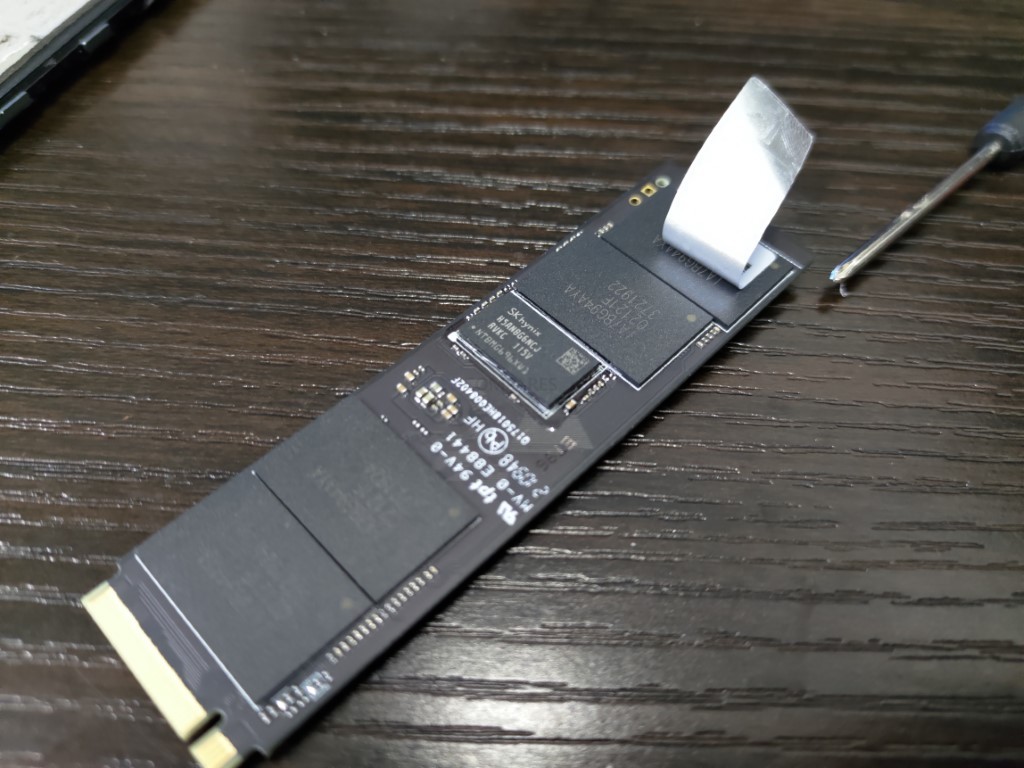
Much like the Controller on the Addlink A95 being the ‘CPU’, it also has an area of memory. The Addlink A95 SSD uses 2666Mhz DDR4 memory on board and this in conjunction with the SSD provides a massive body of data handling resources for getting your data moving through the SSD and out of the m.2 NVMe PCIe 4 interface. The amount of memory scales in conjunction with the 1TB or 2TB SSD you use, with 2GB of DDR4 at the on the 2TB tier, 1GB DDR4 on the 1TB, etc.
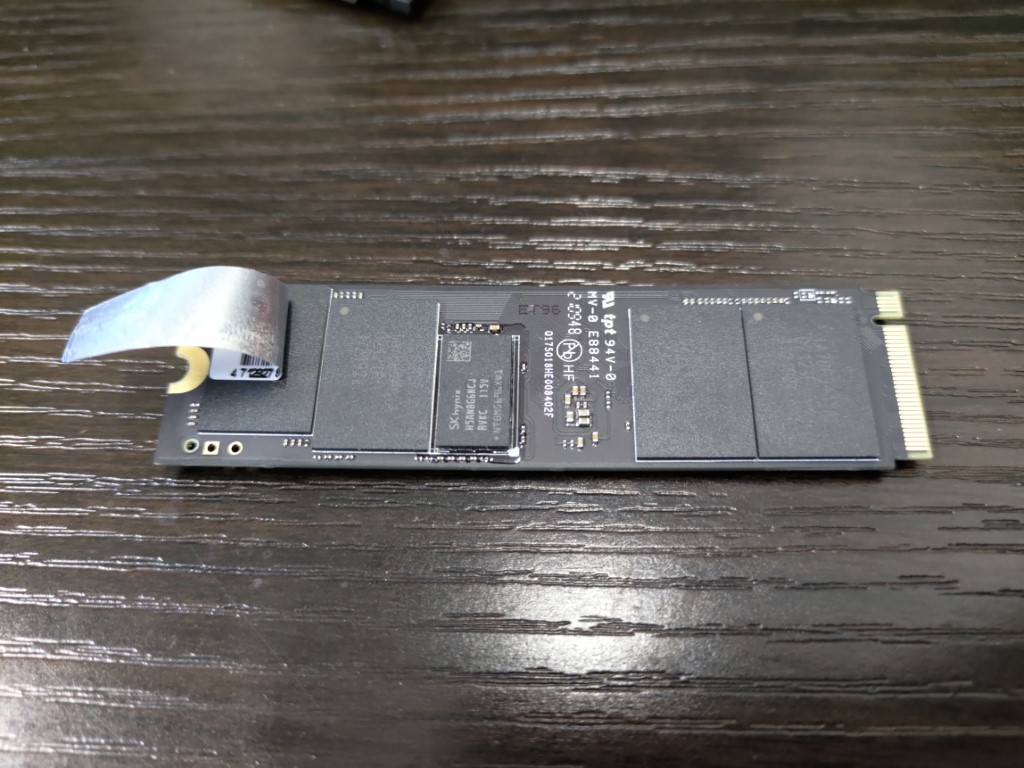
Finally, there is the M.2 NVMe connection. Not all m.2 SSDs are created equal and although M.2 SATA and M.2 NVMe look similar, they provide massively different performance and connectivity. However, the Addlink A95 takes it one step further, by using a newer generation of PCIe Connectivity. In short, M.2 NVMe SSDs are connected to the host PC/Console system via PCIe protocol (think of those slots that you almost always use for your graphics cards, but a much, MUCH smaller connector). These allow much larger bandwidth (ie maximum speed) for the connected storage media, Much like regular PCIe slots, they have different versions (i.E PCIe Gen 1, 2, 3, 4, etc) and also a multiplying factor (x1, x2, x4, etc). Up until around 18 months ago, the best M.2 NVMes were M.2 PCIe Gen 3×4 (so a maximum 4,000MB/s possible). However, never generation SSD like the Addlink A95 use PCIe Gen 4×4 (a potential 8,000MB/s possible) and it is only now that SSD controllers and NAND production has reached a point where it can catch up and fully saturate (i.e fill) this connection.
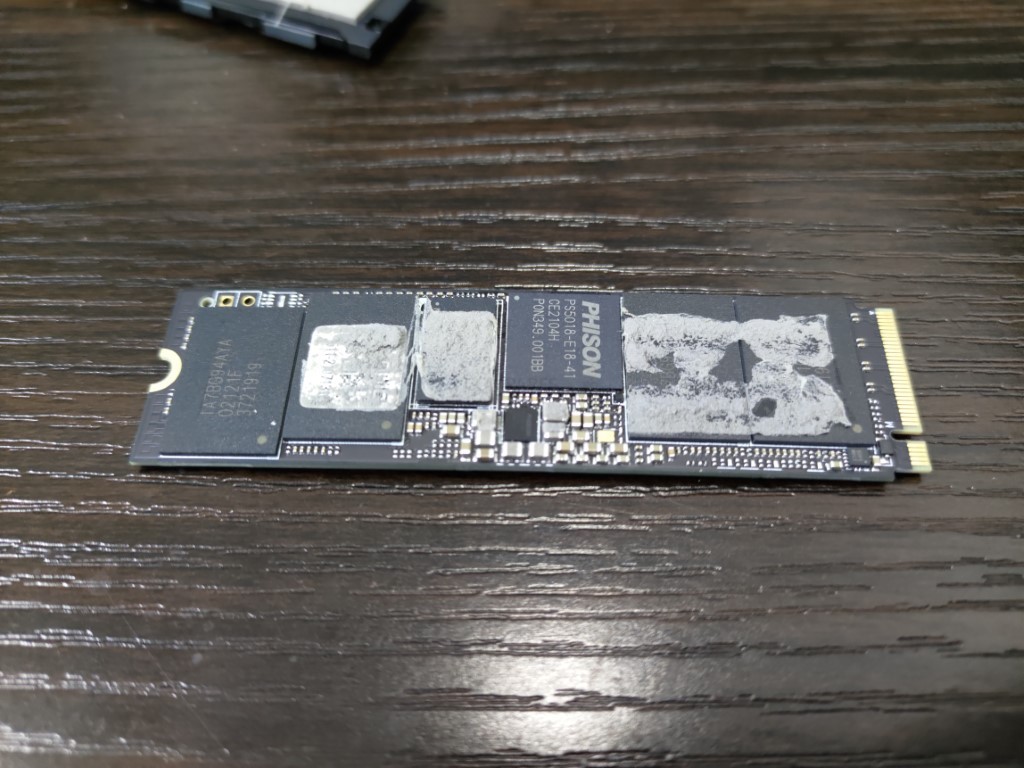
Overall, you really cannot fault the hardware inside/onboard the Addlink A95, as it is still (at release) higher performing in sequential Read and Write than many other M.2 NVMe PCIe 4 SSDs released in that time. Before we go into the full testing, however, it is worth taking a moment to look closely at the reported performance benchmarks of the Addlink A95, as although the performance seems stellar, there are areas such as IOPS and endurance when compared with its main rivals that are worth taking into consideration.
Addlink A95 SSD Review – Official Stats First
Before we conduct our own testing on this SSD, Let’s take a closer look at the reported specifications and benchmarks first. The Addlink A95 SSD arrives in multiple capacities (below). The Prices currently are a little inconsistent (with each higher capacity tier actually having a higher price per GB – quite unusual) likely due to the hardware shortages, the Pandemic, Chia has affected SSD availability in the last 12 months and most recently the announcement that PS5 supports this SSD and it has increased the majority of PS5 supported SSDs price point in most regions. Below is a breakdown of how each Addlink A95 SSD compares:
| Brand/Series | Addlink A Series A95
1TB = $199 / £199 – 2TB = $409 / £399 – 4TB = $799 / £799 |
Seagate Firecuda 530
500GB – $149.99, 1TB – $239.99, 2TB – $489.99, 4TB – $949.99 |
WD Black SN850
|
| PCIe Generation | PCIe Gen 4 | PCIe Gen 4 | PCIe Gen 4 |
| NVMe Rev | NVMe 1.4 | NVMe 1.4 | NVMe 1.4 |
| NAND | 3D TLC Micron B47R 176L | 3D TLC Micron B47R 176L | BiCS4 96L TLC |
| Max Capacity | 4TB – Double Sided | 4TB – Double Sided | 2TB |
| Controller | Phison E18-PS5018 | Phison E18-PS5018 | WD_BLACK G2 |
| Warranty | 5yr | 5yr | 5yr |
| 500GB Model | N/A | ZP500GM3A013 | WDS500G1X0E-00AFY0 |
| Price in $ and $ | N/A | $139 / £119 | $119 / £99 |
| 1TB Model | AD1TBA95M2P | ZP1000GM3A013 | WDS100T1X0E-00AFY0 |
| Price in $ and $ | $199 / £199 | $239 / £199 | $249 / £169 |
| 2TB Model | AD2TBA95M2P | ZP2000GM3A013 | WDS200T1X0E-00AFY0 |
| Price in $ and $ | $409 / £399 | $419 / £379 | $399 / £339 |
| 4TB Model | AD4TBA95M2P | ZP4000GM3A013 | N/A |
| Price in $ and $ | $799 / £799 | $949 / £789 | N/A |
| 500GB Model | N/A | ZP500GM3A013 | WDS500G1X0E-00AFY0 |
| Total Terabytes Written (TBW) | N/A | 640TB | 300TB |
| Mean Time Between Failures (MTBF, hours) | N/A | 1,800,000 | 1,750,000 |
| DWPD | N/A | 0.7DWPD | 0.3DWPD |
| 1TB Model | AD1TBA95M2P | ZP1000GM3A013 | WDS100T1X0E-00AFY0 |
| Total Terabytes Written (TBW) | 700TB | 1275TB | 600TB |
| Mean Time Between Failures (MTBF, hours) | 1,800,000 | 1,800,000 | 1,750,000 |
| DWPD | 0.38DWPD | 0.7DWPD | 0.3DWPD |
| 2TB Model | AD2TBA95M2P | ZP2000GM3A013 | WDS200T1X0E-00AFY0 |
| Total Terabytes Written (TBW) | 1400TB | 2550TB | 1200TB |
| Mean Time Between Failures (MTBF, hours) | 1,800,000 | 1,800,000 | 1,750,000 |
| DWPD | 0.38DWPD | 0.7DWPD | 0.3DWPD |
| 4TB Model | AD4TBA95M2P | ZP4000GM3A013 | N/A |
| Total Terabytes Written (TBW) | 3000TB | 5100TB | N/A |
| Mean Time Between Failures (MTBF, hours) | 1,800,000 | 1,800,000 | N/A |
| DWPD | 0.38DWPD | 0.7DWPD | N/A |
There are clear throughput improvements as you rise through the capacity tiers (not unusual), as does the rated 4K IOPS. Though one area worth focusing on a little is that TBW (terabytes Written) and DWPD (Drive writes per day), as this drive is rated a pinch higher than the Samsung 980 Pro and WD Black SN850 in terms of NAND lifespan on daily writes, likely down to that Micron 96 Layer 3D TLC NAND used, rather than t used by those used by competitors. This is an important point because the brand has significantly less pedigree in-home/business SSD media than the likes of Samsung, WD and Seagate and people will want to know they are going to get a product that lasts!
As you might expect from the use of the Phison E18 controller and 176 layer NAND, the reported IOPS on each capacity is actually pretty similar to the 96L WD Black SN850 and near enough identical to the Seagate Firecuda. This is still very impressive anyway, but it does make me wonder where the disparity stems from. Indeed, when you look at the bulk of PCIe 4×4 M.2 NVMe 1.4 SSD, that feature the E18 controller and 96L (or higher) on board, it really only leaves about 4 other SSDs in the market today that this can be compared against. The Sabrent Rocket 4 Plus, the MSI Spatium M480, the ADATA Gammix S70 and (current leader) the Seagate Firecuda 530. Of those, the only one that seemingly ‘out specs’ the Addlink A95 is the Seagate Firecuda 530 marginally. However, the Addlink A95 SSD has been available in the market for just a week or so and has certainly embedded itself in the market with PS5 users. Below is how these three drives compare:
| Brand/Series | Addlink A Series A95
1TB = $199 / £199 – 2TB = $409 / £399 – 4TB = $799 / £799 |
Seagate Firecuda 530
500GB – $149.99, 1TB – $239.99, 2TB – $489.99, 4TB – $949.99 |
WD Black SN850
|
| 500GB Model | N/A | ZP500GM3A013 | WDS500G1X0E-00AFY0 |
| Sequential Read (Max, MB/s), 128 KB | N/A | 7000MB | 7000MB |
| Sequential Write (Max, MB/s), 128 KB | N/A | 3000MB | 4100MB |
| 1TB Model | AD1TBA95M2P | ZP1000GM3A013 | WDS100T1X0E-00AFY0 |
| Sequential Read (Max, MB/s), 128 KB | 7400MB | 7300MB | 7000MB |
| Sequential Write (Max, MB/s), 128 KB | 6000MB | 6000MB | 5300MB |
| 2TB Model | AD2TBA95M2P | ZP2000GM3A013 | WDS200T1X0E-00AFY0 |
| Sequential Read (Max, MB/s), 128 KB | 7400MB | 7300MB | 7000MB |
| Sequential Write (Max, MB/s), 128 KB | 7000MB | 6900MB | 5100MB |
| 4TB Model | AD4TBA95M2P | ZP4000GM3A013 | |
| Sequential Read (Max, MB/s), 128 KB | 7400MB | 7300MB | N/A |
| Sequential Write (Max, MB/s), 128 KB | 7000MB | 6900MB | N/A |
| Brand/Series | Addlink A Series A95 | Seagate Firecuda 530 | WD Black SN850 |
| 500GB Model | N/A | ZP500GM3A013 | WDS500G1X0E-00AFY0 |
| Random Read (Max, IOPS), 4 KB QD32 | N/A | 400,000 | 1,000,000 |
| Random Write (Max, IOPS), 4 KB QD32 | N/A | 700,000 | 680,000 |
| 1TB Model | AD1TBA95M2P | ZP1000GM3A013 | WDS100T1X0E-00AFY0 |
| Random Read (Max, IOPS), 4 KB QD32 | 750000 | 800000 | 1,000,000 |
| Random Write (Max, IOPS), 4 KB QD32 | 1000000 | 1000000 | 720,000 |
| 2TB Model | AD2TBA95M2P | ZP2000GM3A013 | WDS200T1X0E-00AFY0 |
| Random Read (Max, IOPS), 4 KB QD32 | 1,000,000 | 1,000,000 | 1,000,000 |
| Random Write (Max, IOPS), 4 KB QD32 | 1,000,000 | 1,000,000 | 710,000 |
| 4TB Model | AD4TBA95M2P | ZP4000GM3A013 | |
| Random Read (Max, IOPS), 4 KB QD32 | 940,000 | 1,000,000 | N/A |
| Random Write (Max, IOPS), 4 KB QD32 | 1,000,000 | 1,000,000 | N/A |
Yes, that is a LONG table, but you can immediately see that the Seagate Firecuda 530 raises the stakes on all of the key specifications. Although there are a number of micro reasons for this and they both feature 176L NAND, the Seagate entry has the inclusive data recovery services and a much more established reputation. Yes, that is why the Firecuda 530 commands the higher price tag. Additionally, the WD Black arriving at a better price point at the lower tiers (constantly in sales as it has been in the market for almost a year longer) in most tiers and the fact it does this whilst still hitting that 7,000MB/s certainly gives pause for thought. However, for many, the additional cost for higher durability they may never need, peak performance their core system will not reach and IOPS rating that their larger file handling will never utilize will mean that holding out for the Firecuda or WD Black SN850 is not in their interest. Both SSDs (on paper at this stage!) are fantastic examples of where consumer and prosumer SSDs are evolving towards. Let’s get the Addlink A95 on the test machine!
Testing the Addlink A95 m.2 PCIE4 NVMe SSD
The Addlink A95 was selected for this test and it was tested using multiple benchmark tools, from a cold boot, in the 2nd storage slot (i.e not the OS drive). Each test was conducted three times (full details of this are shown in the YouTube Review of the Addlink A95 over on NASCompares):
Test Machine:
- Windows 10 Pro Desktop System
- Intel i5 11400 Rocket Lake – 6-Core 2.6/4.4Ghz
- 16GB DDR4 2666MHz Memory
- Intel B560M mATX Motherboard
- OS Storage, Seagate Firecuda 120 SSD
- Test SSD connected to Secondary PCIe Gen 4 M.2 Slot
Using CrystalDisk, we got a good measure of the drive and verified that this PCIe Gen 4 x4 SSD was indeed using the 4×4 lane. Additionally, the temp averaged out around 41C between each test being conducted.

The first tests were conducted using the ATTO disk benchmark software. The first was a 256MB test file size and below is a breakdown of the transfer rates and IOPS. The 2nd Test was a 1GB test file and finally, the last test was with a 4GB test file. The system was given 1-minute cool downtime between tests, no screen recording software was used (remove overhead) and a heatsink was used throughout (no reboots)
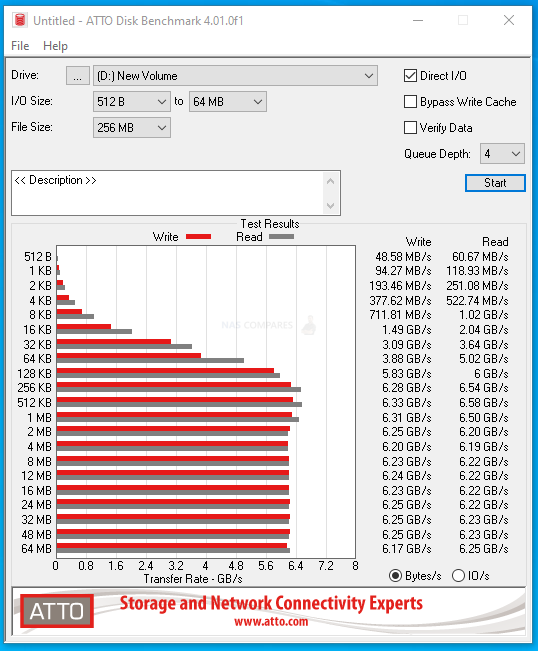 |
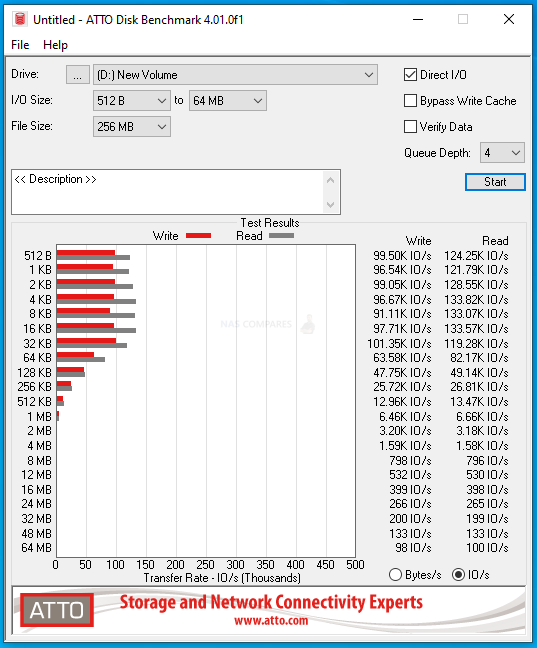 |
ATTO Disk Benchmark Test #1
256MB File PEAK Read Throughput = 6.58GB/s
256MB File PEAK Write Throughput = 6.33GB/s
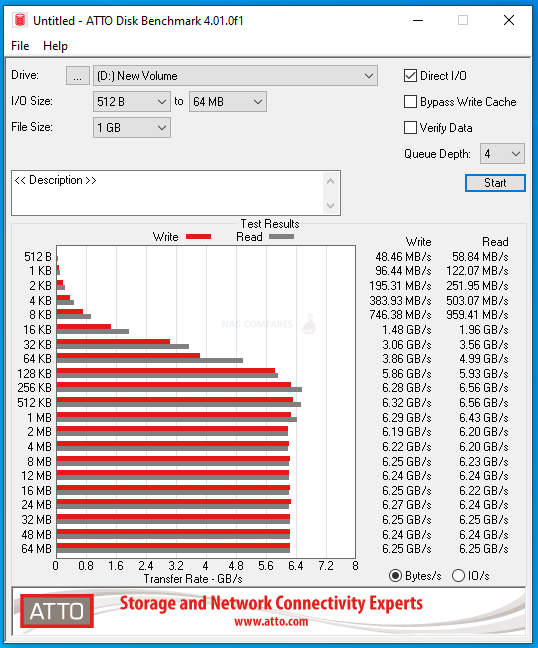 |
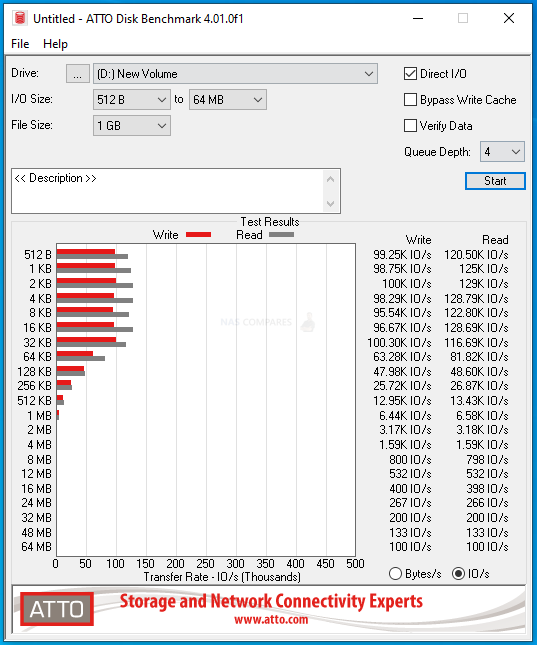 |
ATTO Disk Benchmark Test #2
1GB File PEAK Read Throughput = 6.56GB/s
1GB File PEAK Write Throughput = 6.32GB/s
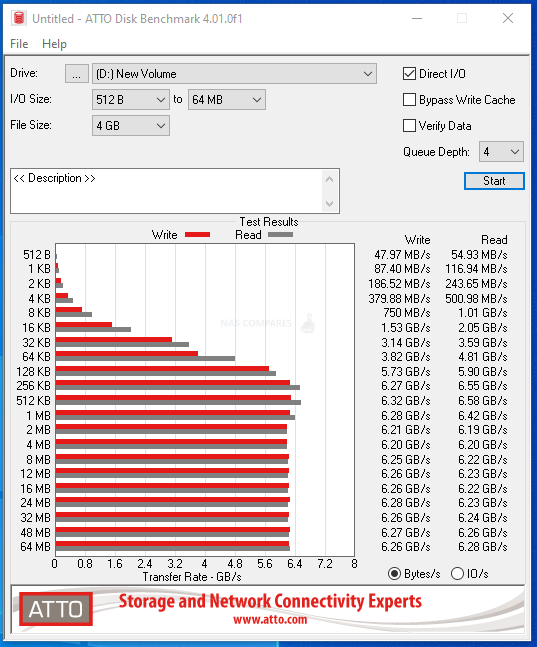 |
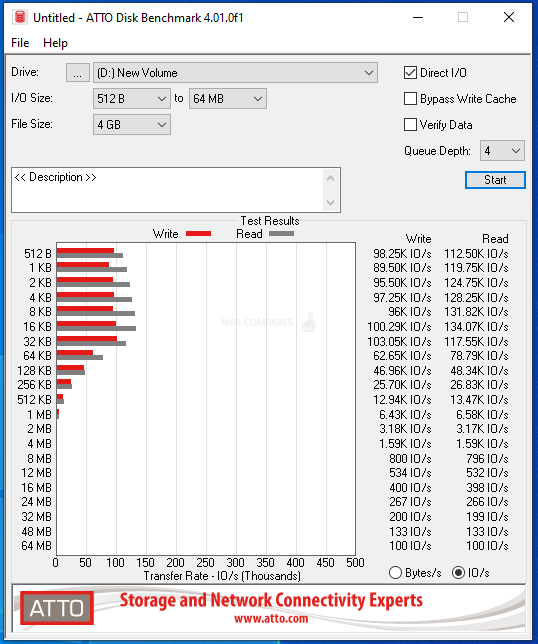 |
ATTO Disk Benchmark Test #3
4GB File PEAK Read Throughput = 6.58GB/s
4GB File PEAK Write Throughput = 6.32GB/s
Next, although the ATTO tests were quite good, but not what I would have hoped from this SSD, so I moved on to the Crystal Disk Mark testing to see how well it would handle our lasts barrage of tests. The first test was the 1GB file testing, which measured both sequential and random, as well as the read and write IOPS. Test were conducted on a 1GB, 4GB and 16GB Test File. I also included a mixed 70/30 read and write task to give a little bit more of a realistic balanced workload. These tests were conducted with 1-minute cooling break in between
CRYSTALDISK MARK 1GB TEST
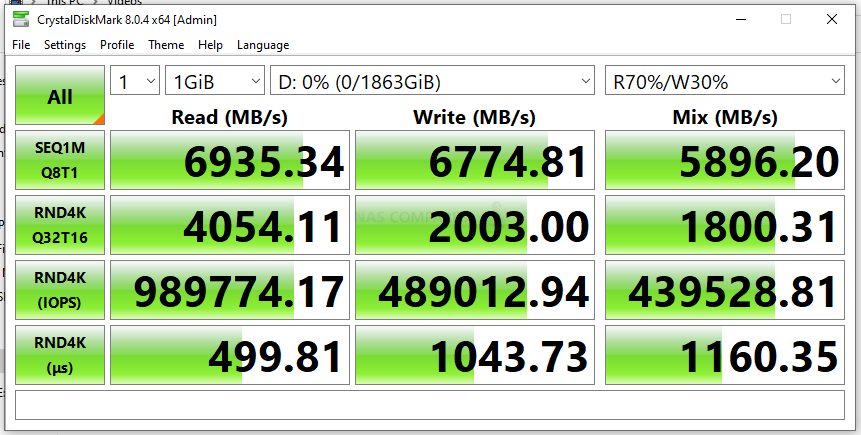
CRYSTALDISK MARK 4GB TEST
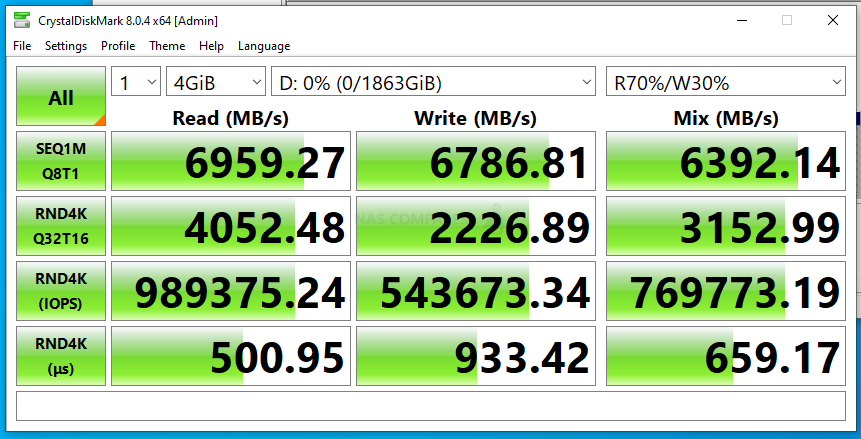
CRYSTALDISK MARK 16GB TEST
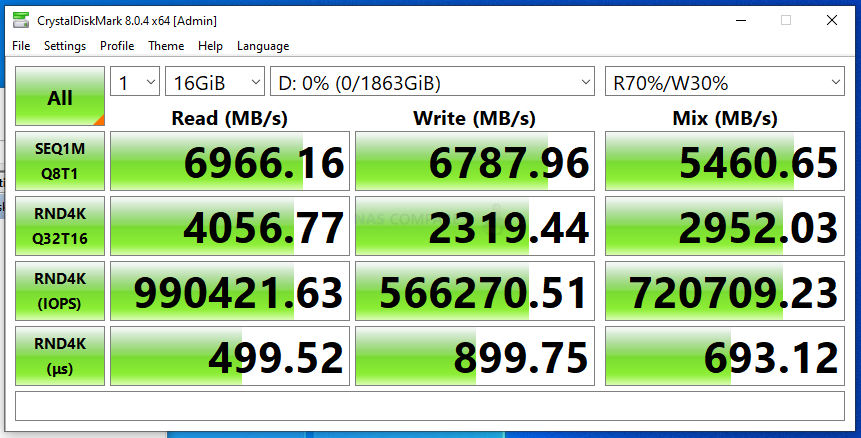
Next, I switched to AS SSD benchmark. A much more thorough test through, I used 1GB, 3GB and 5GB test files. Each test includes throughput benchmarks and IOPS that are respective to the larger file sizes (important, if you are reading this and trying to compare against the reported 4K IOPS from the manufacturer).
AS SSD Benchmark Test #1
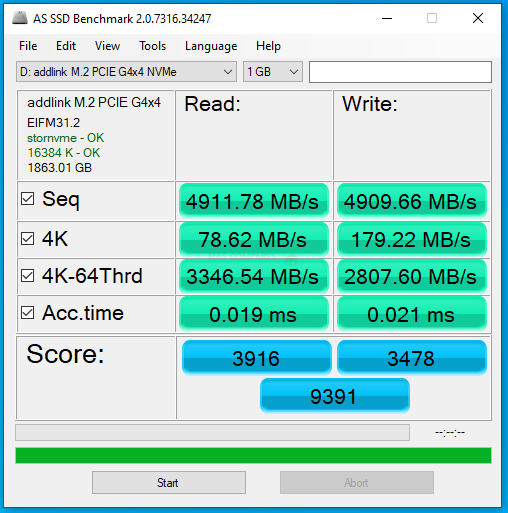 |
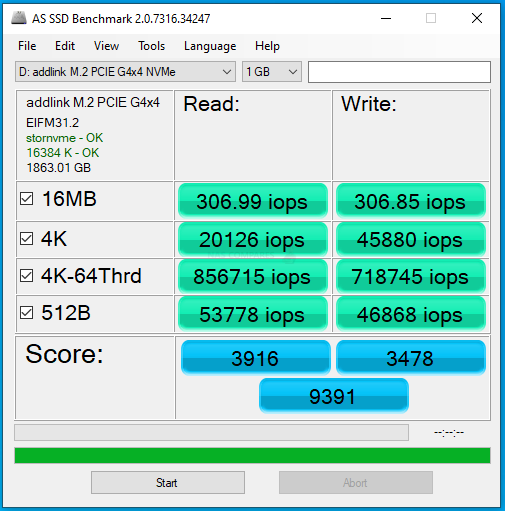 |
AS SSD Benchmark Test #2
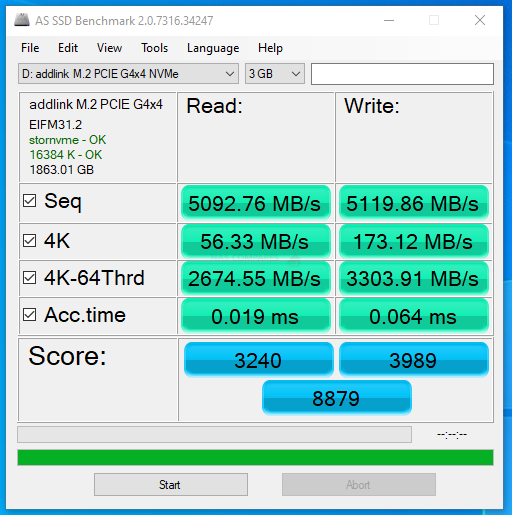 |
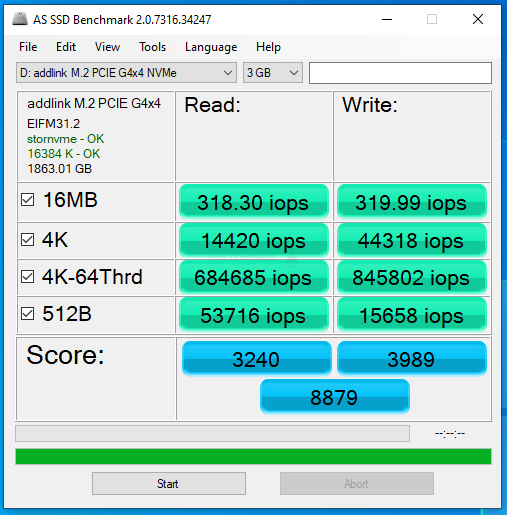 |
AS SSD Benchmark Test #3
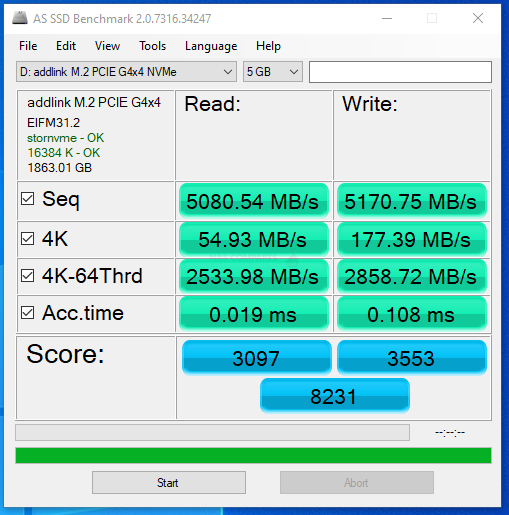 |
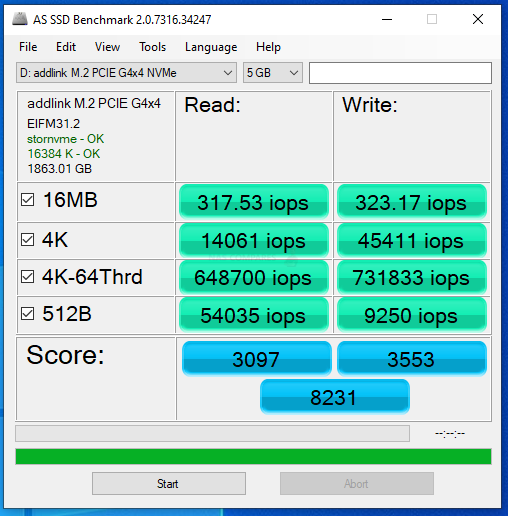 |
Ordinarily, I would introduce tests like BlackMagic and AJA into the mix here, but even a short burst of testing on an NVMe like this would over saturate the cache memory on board. Nevertheless, in the short term we still could ascertain the reported performance on 1GB, 4GB and 16GB file testing was:
1GB AJA File Test Results (Peak) = 5920MB/s Read & 5666MB/s Write

4GB AJA File Test Results (Peak) = 5894MB/s Read & 5636MB/s Write

16GB AJA File Test Results (Peak) = 5954MB/s Read & 5484MB/s Write

Overall, the Addlink A95 was certainly able to provide some solid performance, as well as potentially exceed the test figures here on a more powerful machine. Given the reported Read and Write statistics that the brand has stated publically, I think there is enough evidence here to back up those claims. IOPs were a little lower than I expected, but again, we were testing very large file types, so this would have to be taken in context. Below is the full temperature reading throughout the entire tests, with the SSD and it’s unique heatsink maintaining a solid temperature of between 30-40 degrees throughout – very impressive.
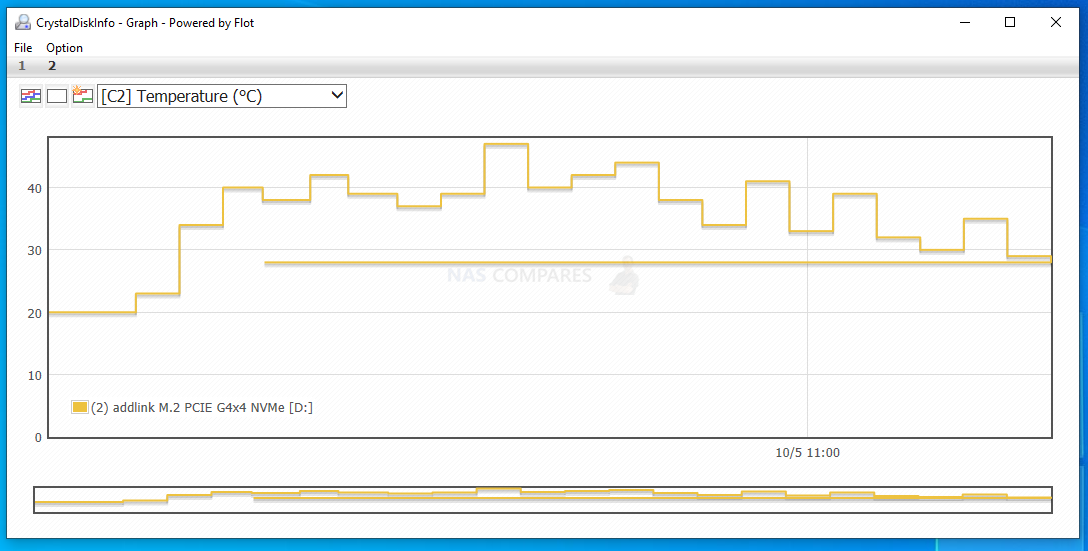
Addlink A95 SSD Review – Conclusion
Few SSDs that I have featured here on NASCompares have left me with the consistently please tone that the Addlink A Game A95 SSD has. Whether you are looking at this as an SSD upgrade for your PS5 or your Gaming PC, there is very little to be unhappy about here as a gamer. The Build quality of both the SSD itself, as well as the heatsink and choices made at the hardware architecture level are all high-end choices that do not leave you with a feeling unsatisfied. When choosing to upgrade your SSD, it can be easy to always opt for the much bigger know brands like WD or Seagate, thinking that there is a clear reason for their higher price. As true as that can be sometimes, in the case of the Addlin kA95 you have an SSD that takes advantage of the same hardware choices that those bigger brands office, includes a high-quality heatsink, arrives preattached in a very sturdy build and at no point in the testing did we feel that a power or memory bottleneck appears. It might lack some of the enterprise bells and whistles of more enterprise-level SSDs, but the A95 is not targeting flash, fabric or caching – it is designed for gamers and at this, it is an unquestionable success. Keep an eye on this one!
| PROs of the Addlink A95 | CONs of the Addlink A95 |
| Genuinely Impressive Performance (not just empty benchmarks)
Very nice heatsink and thermal application internally Low-Temperature Reading even in high use One of the highest Read/Write Performers available Use of Micron 176L TLC NAND is a rare treat in Oct ’21 Cracks the 1 Million IOPS Mark Higher Durability than WD Black SN850 and Samsung 980 Pro |
More Expensive than WD Black SN850 & Samsung 980 Pro
Not Quite as Durable as Seagate Firecuda 530 |
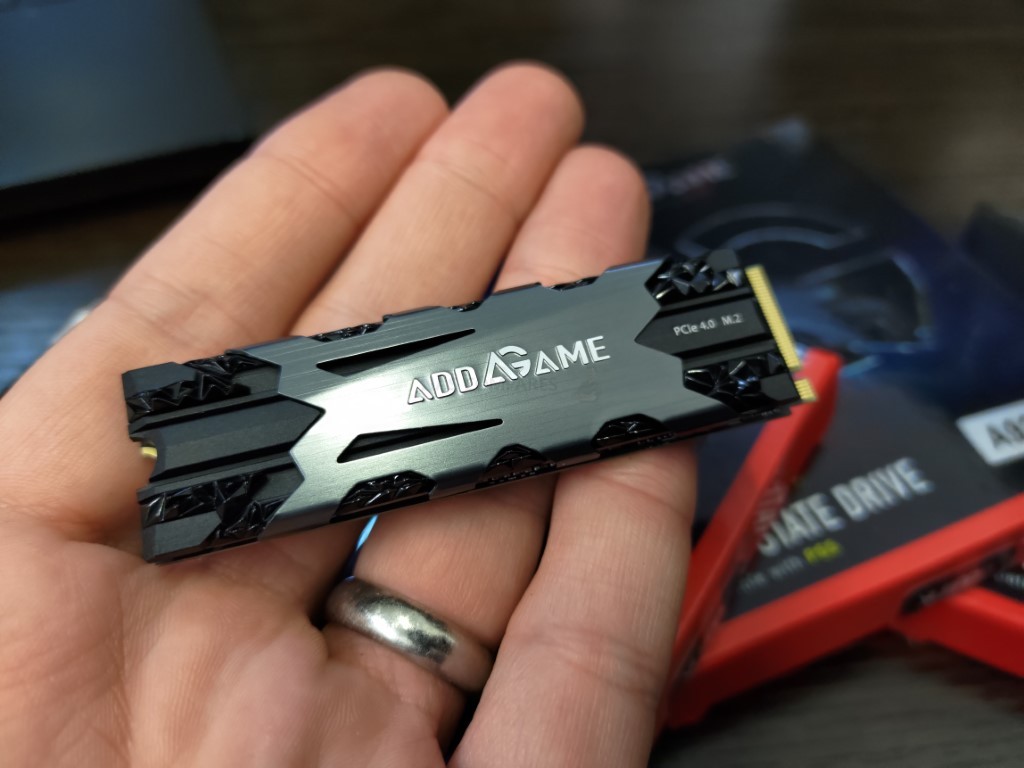
🔒 Join Inner Circle
Get an alert every time something gets added to this specific article!
This description contains links to Amazon. These links will take you to some of the products mentioned in today's content. As an Amazon Associate, I earn from qualifying purchases. Visit the NASCompares Deal Finder to find the best place to buy this device in your region, based on Service, Support and Reputation - Just Search for your NAS Drive in the Box Below
Need Advice on Data Storage from an Expert?
Finally, for free advice about your setup, just leave a message in the comments below here at NASCompares.com and we will get back to you. Need Help?
Where possible (and where appropriate) please provide as much information about your requirements, as then I can arrange the best answer and solution to your needs. Do not worry about your e-mail address being required, it will NOT be used in a mailing list and will NOT be used in any way other than to respond to your enquiry.
Need Help?
Where possible (and where appropriate) please provide as much information about your requirements, as then I can arrange the best answer and solution to your needs. Do not worry about your e-mail address being required, it will NOT be used in a mailing list and will NOT be used in any way other than to respond to your enquiry.

|
 |
The Best Bits (and Worst Bits) of NAS of 2025!
Minisforum MS-02 Ultra Review
Minisforum N5 NAS, 6 Months Later - Better, Worse, the Same?
Beelink ME Pro NAS Revealed
Best SOLID STORAGE NAS of 2025
Should You Worry About the NanoKVM Hidden Microphone?
Access content via Patreon or KO-FI





Discover more from NAS Compares
Subscribe to get the latest posts sent to your email.


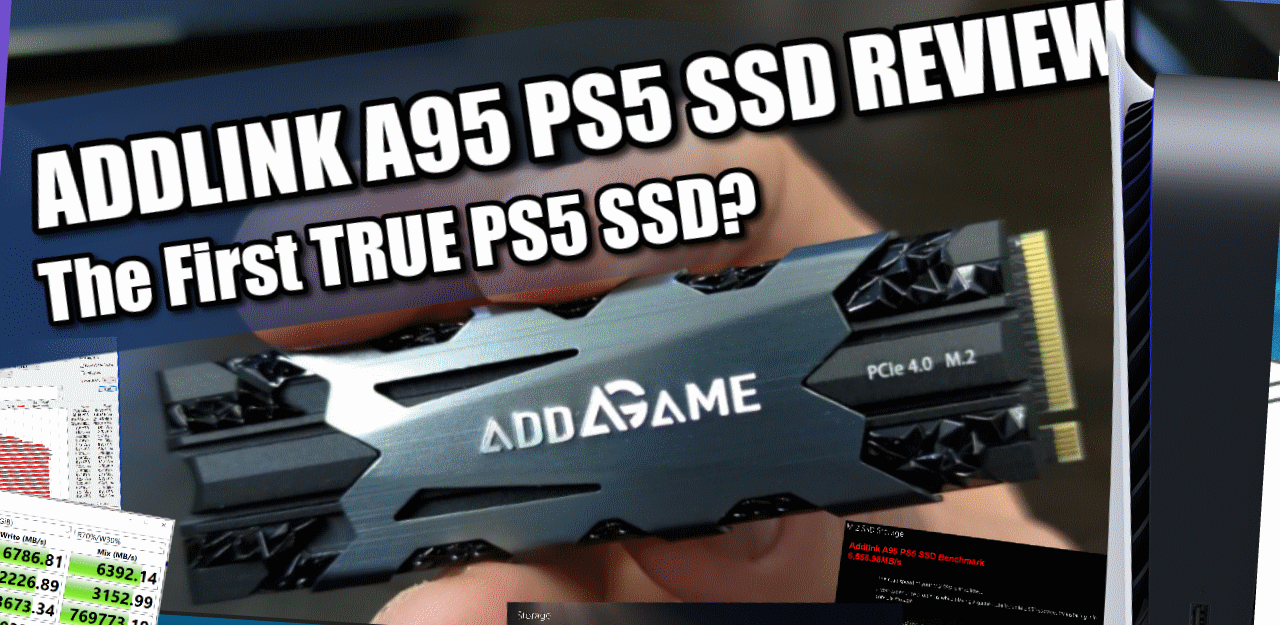







Don’t buy those SSDs, they are bad, I bought two, both came with writing problems, causing the SSD to always disconnect when installing some large program. The company is not responsible for the guarantee since its contact system for the guarantee does not work, they evade you by sending a message it has not been possible to process your request, try again later.
REPLY ON YOUTUBE
Don’t buy those SSDs, they are bad, I bought two, both came with writing problems, causing the SSD to always disconnect when installing some large program. The company is not responsible for the guarantee since its contact system for the guarantee does not work, they evade you by sending a message it has not been possible to process your request, try again later.
REPLY ON YOUTUBE
I can’t fit mine in what am I doing wrong
REPLY ON YOUTUBE
A really good & detailed video ????
REPLY ON YOUTUBE
subbed great video pal
REPLY ON YOUTUBE
Thanks for the video really enjoyed every second I’m thinking about getting a 2tb for ps5 pro again thank you it’s appreciated ????????
REPLY ON YOUTUBE
Thanks for the rievew
REPLY ON YOUTUBE
Just finding out about this memory. I’ve been looking for one for my PS5 and can’t decide between this memory, the Firecuda 530 and the Samsung 990 Pro. Which one is the best between them? Or which one is the best of all????
REPLY ON YOUTUBE
what’s the long-term experience with this SSD?
REPLY ON YOUTUBE
Acer predator ssd gm7 or this
REPLY ON YOUTUBE
I got a lucky find a second uk tech store. £250 for the 4TB version replacing the wd black 2tb I had in it already. Working great for me
REPLY ON YOUTUBE
Why the grapchics looks different
REPLY ON YOUTUBE
I was going to buy one after this review but was shocked how low the price is, seems they now use thermal pad rather than the putty, still worth getting? Wonder how hot they run with the pads vs the putty
REPLY ON YOUTUBE
Insane how prices have dropped I just got a 2tb 990 pro for 160 bucks
REPLY ON YOUTUBE
Just bought the 4tb should I remove the sticker on the back of the ssd before fitting in ps5
REPLY ON YOUTUBE
I just bought the 4tb
REPLY ON YOUTUBE
What read speed did you get on formatting? I got 6409
why does the image on the right look dull as fuck whilst the left looks good – makes no sense i thought ssd just for storage and speed no graphics
REPLY ON YOUTUBE
Just got 2TB from Amazon for £125 cannot complain at that price point!
REPLY ON YOUTUBE
Just paid £299 on Amazon for 4tb for my ps5 I’m taking it this is a good fast drive ?
REPLY ON YOUTUBE
Just paid £249 for it!!!! What read speed did you get on formatting it? I got 6409 so a bit lower than the reviewer got….
I appreciate the in-depth look into the ssd and the presentation of all the stats i can’t thank you enough
REPLY ON YOUTUBE
6:46 Glad i just waited to get mine for 150’ish on Amazon
REPLY ON YOUTUBE
I just got this drive and my PS5 shows 5932 MB/s Read speed, which is way less than what yours shows. Should I return it for another one?
This is a good average speed. You will not notice practical difference with a faster SSD.
I just bought this A95 4TB and mine only shows 5952MB/s after my PS5 formatted it. Do you think I got a defective one, or is this normal to be over 1200 less than the published speed. It’s only 500MB/s less than what you got, but it makes me feel like it might be somewhat defective nonetheless.
REPLY ON YOUTUBE
I got 6409 on the 4tb one just bought today. So yours does seem a bit low and mine is still lower than the reviewer got
I just fitted the 1tb for £85 from Amazon, ps5 seems a bit nippier too
REPLY ON YOUTUBE
I just ordered the 1TB from Amazon for $85. It’s nice to see that these things are finally becoming more affordable.
REPLY ON YOUTUBE
I purchased the 2tb ssd because of your reviews of this ssd
REPLY ON YOUTUBE
Hi guys, i want to buy SSD for my PS5, I think it comes down to 2 brands
1. Addlink A95 1 TB
2. Viper VP4300 1 TB
Can someone help me to choose from those 2 please? And why you choose it?
REPLY ON YOUTUBE
Just seen this for £182 on amazon, 2TB version…seems like a steal.
REPLY ON YOUTUBE
Addlink Addgame (1TB)is in the same price range with Seagate Firecuda 530(1TB) at the moment. Which one is better as per quality and performance?
REPLY ON YOUTUBE
what’s the difference between A95 and S95? ALSO….. is this A95 7200, the FASTEST M.2 available? if NOT what is …. THANKS
REPLY ON YOUTUBE
Getting mine tomorrow which will be nice to set up this weekend the 2tb version
REPLY ON YOUTUBE
???????? I just ordered the 4TB version from amazon last night! I wrote this before watching so I hope that the 4tb version improves my warzone screen freezing issues. It seems that when I join a match that the screen freezes for 3-4 seconds only in the beginning lobby.
REPLY ON YOUTUBE
Im using this ssd on my pc but i dont know why is run really hot when im using it sometime it reach 70c and my pc auto restart
REPLY ON YOUTUBE
Is this a good one am looking at 4tb and will I get a good speed 6500 to
REPLY ON YOUTUBE
Is the S70 compatible with Synology NAS?
REPLY ON YOUTUBE
Mine crashed when I was trying to format mine
REPLY ON YOUTUBE
I need help can’t decide between the s70 blade and the addlink a95 help me
REPLY ON YOUTUBE
Lmfao exact same load as ps5 internal for spiderman which is a ps5 game and death loop seems to load in faster on the vanilla card.
REPLY ON YOUTUBE
Question is will this last i know theres a 5 year warranty
REPLY ON YOUTUBE
Why does the stock ssd screen brighter then the a95 screen?
REPLY ON YOUTUBE
Please bench the addlink a92 for Ps5
REPLY ON YOUTUBE
Just picked up a 2TB tonight thanks for what you do sir!! And looking forward to your next videos
REPLY ON YOUTUBE
I’m trying to figure out why my Samsung 980 pro is only benchmarking at only 5660 ????????♂️
REPLY ON YOUTUBE
On Oct 29th, Samsung 980 pro 1tb for $249, 2tb for $449, they both come with heatsink and it said their made for Ps5.
REPLY ON YOUTUBE
I have been playing “Deathloop” quite a bit and I’m really enjoying it.
REPLY ON YOUTUBE
I bought one but still thank u so much for the review
REPLY ON YOUTUBE
Curious as you keep bringing up the idea of texture pop-ins test to see a potential bottleneck in storage speed. Have you ever encountered it or have you ever tried it with the slowest allowable nvme to prove your point? Because i think that argument is moot and unrealistic if you’re trying to saturate even the slowest nvme that way given that we are talking about multi gbps storage transfer speeds at pcie gen4 already.
REPLY ON YOUTUBE
For the love of God, no more SSDs…
REPLY ON YOUTUBE
I was hearing about this ssd about a month ago through a Playstation blog. Seems worthy to add to my list.
REPLY ON YOUTUBE
I’ve been waiting for this test and this video drops not to long after installing my addlink A95 2tb. Hopefully the other two test go great, but if not I guess it’s to late lol.
REPLY ON YOUTUBE
Finally! This is what I’ve been waiting for! Thanks for such a thorough review.
REPLY ON YOUTUBE
For some reason, I have fallen in love watching this channel… All because I needed to see what SSD I should go for with my PS5.
REPLY ON YOUTUBE
None of the a95 links work.
REPLY ON YOUTUBE
is adlink ssd are good? adlink brand?
REPLY ON YOUTUBE
watch the whole thing and still don’t kno ……which is better Wd black 850 2tb vs A95 4tb I kno size different but this the comparison I need to kno (performance wise.? Reliability?) ….. Only u can answer ???? my money depending on this answer..
REPLY ON YOUTUBE
Did they launch these ssds on a different planet? Can’t find these anywhere
REPLY ON YOUTUBE
Is this a chinese brand?
REPLY ON YOUTUBE
I have been on the fence about this ssd, thanks for the review. I purchased one through your link.
REPLY ON YOUTUBE
This vs firecuda 530. Which one is better?
REPLY ON YOUTUBE
This drive sounds better than Firecuda 530, could you please do a new top 5 drives again?
REPLY ON YOUTUBE
Spend 1 grand on the Fire Cruda 930 4tb. Yeah, it’s a lot of money. Worth it.
REPLY ON YOUTUBE
409 for 2TB…..nah
REPLY ON YOUTUBE
Wonder how it would be if on the side panel, cut out a square or circle where the ssd goes, keeping on heatsink, put a usb fan, not putting the the ps5 ssd cover, just as an experiment.
REPLY ON YOUTUBE
You always say I could use a capture card but its hooked up to the ps5 . I have a solution sell one of the ssd’s and buy another capture card lol
REPLY ON YOUTUBE
Thanks for the heads up! I just ordered the 1tb and it should be here by Friday. FYI…it was 9 left when I ordered.
REPLY ON YOUTUBE
So the 4tb version works on the PS5 or not
And which heatsink should I get
REPLY ON YOUTUBE
Where can you buy one ? Need it !
REPLY ON YOUTUBE
is it available
REPLY ON YOUTUBE
Fine and dandy, these drives are not available in Canada yet.
REPLY ON YOUTUBE
Im deffinitely getting this for my editing PC thank you for the review!
REPLY ON YOUTUBE
Just ordered a 2tb they posted a Amazon link on Twitter around the same time you uploaded this video. It’s supposed to come in Tuesday.
REPLY ON YOUTUBE
Is it better than the wd black sn850?
REPLY ON YOUTUBE
What SSD has read 7200 above?, seems like PS5 is set to only read 6500-6550 Max
REPLY ON YOUTUBE
Sick looking Heatsink too bad I won’t be seeing it with my current case lol
REPLY ON YOUTUBE
I have ADATA 2.5″ 500 Gig SSD Drive and it works good. It is the Value Champion for PC. Great review on new NVME Certified PS5 Logo Storage.
REPLY ON YOUTUBE
@0:20 That’s what she said.
REPLY ON YOUTUBE
I’m about to install my new SSD and was wondering if I need to tell the PlayStation 5 system to eject my 4 TB external storage because I don’t want to lose any information on that or can I just leave it plugged in?
REPLY ON YOUTUBE